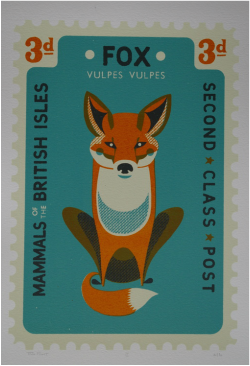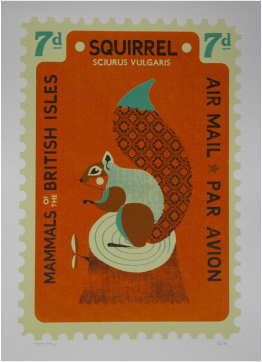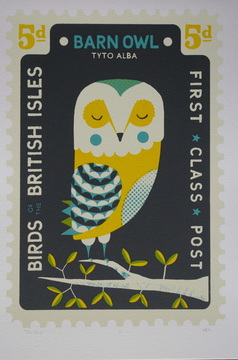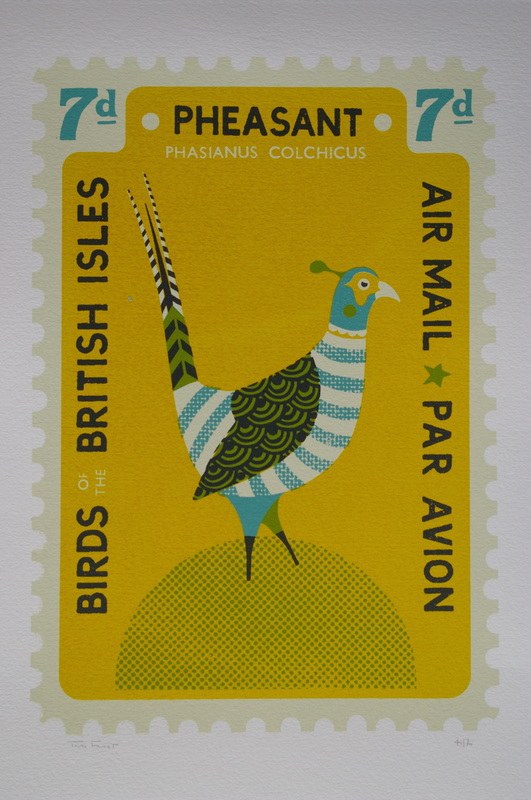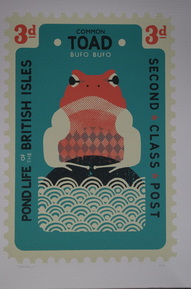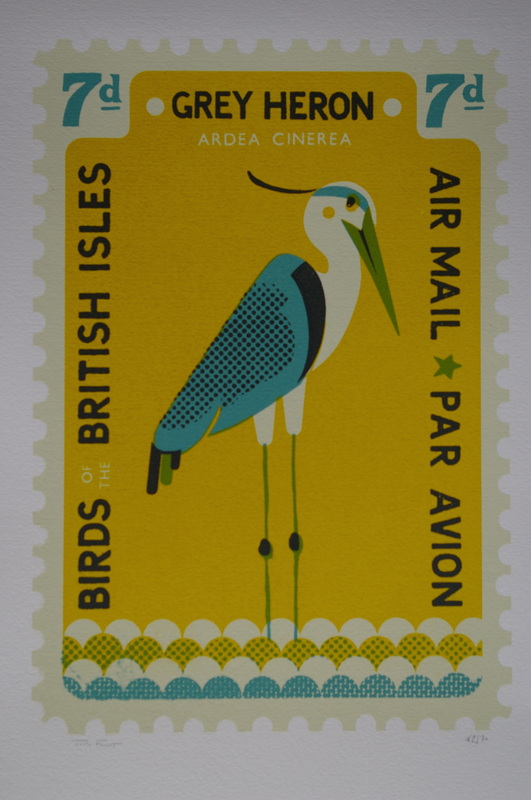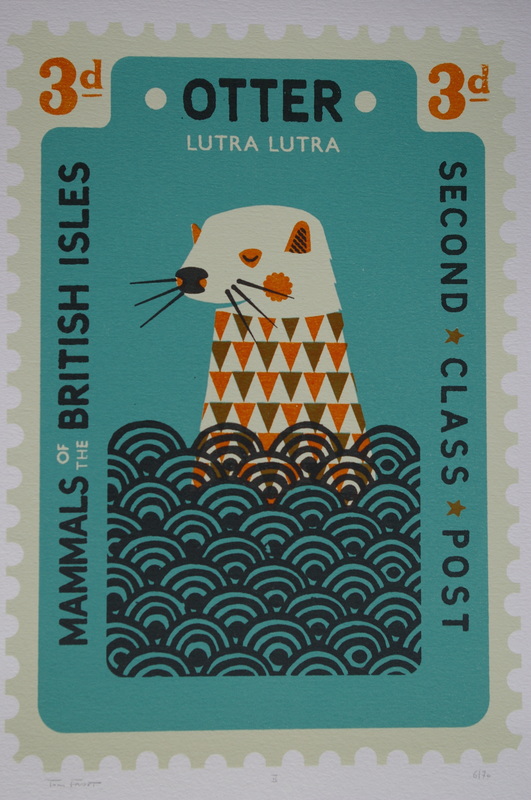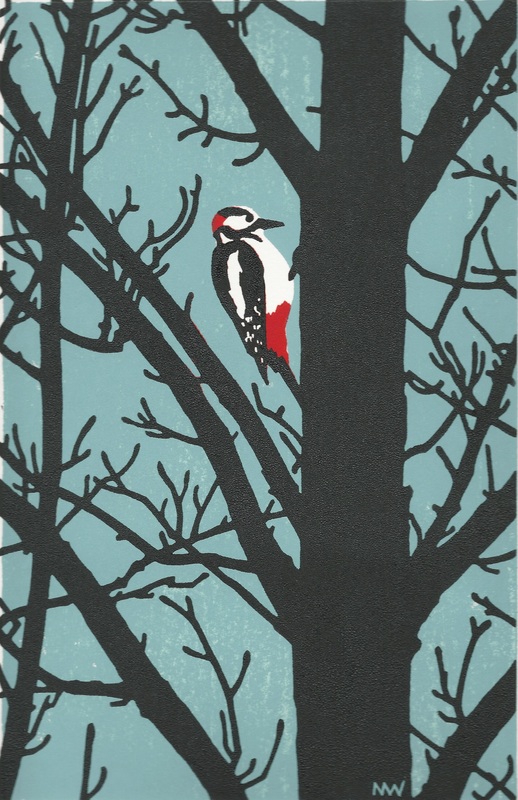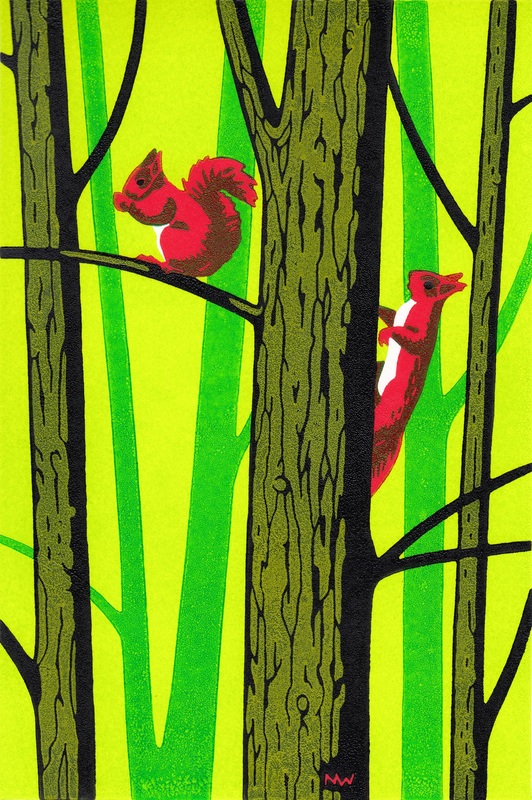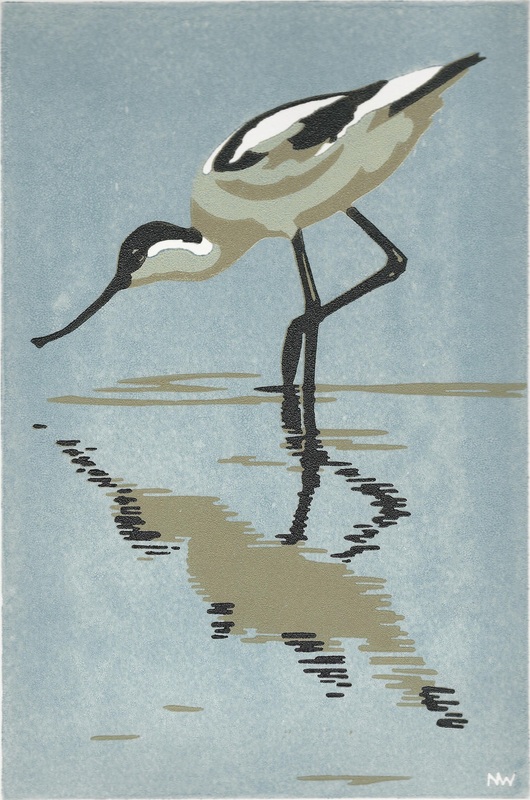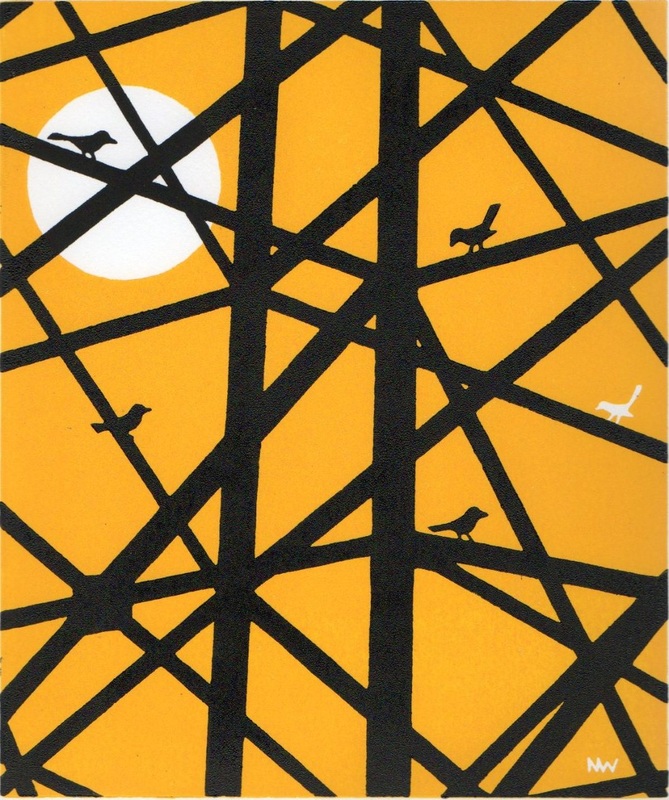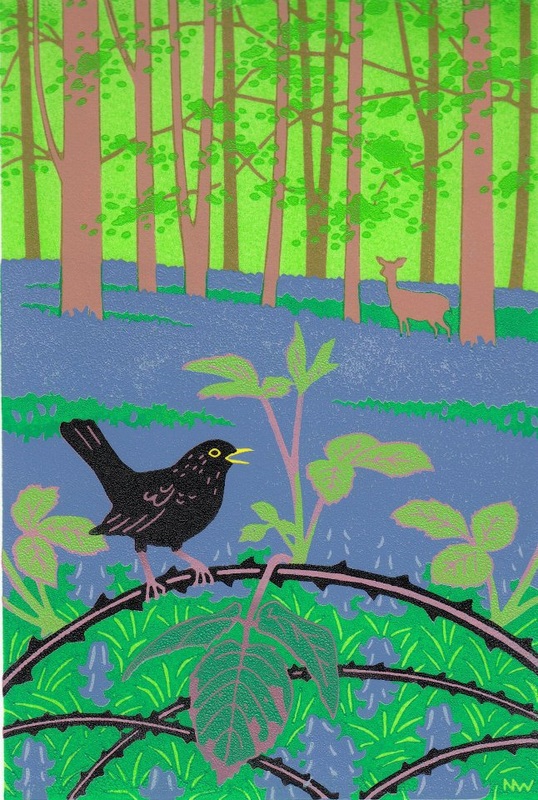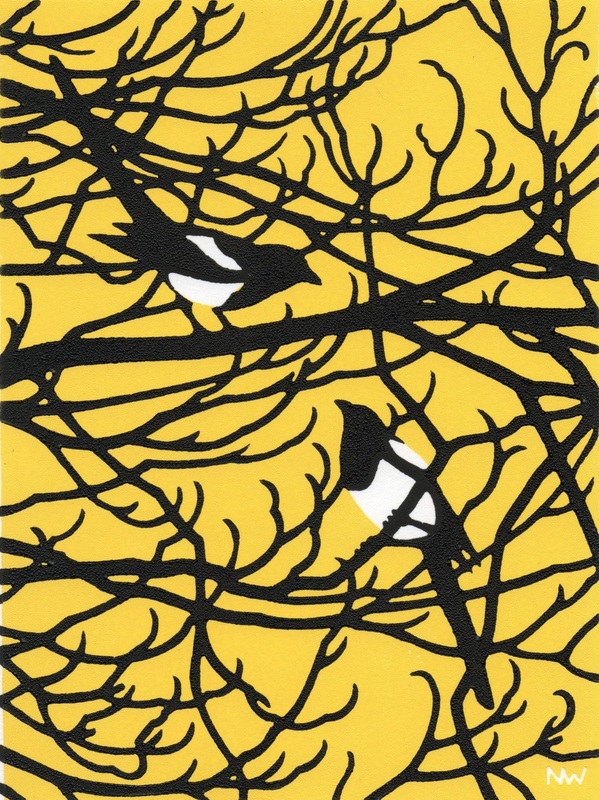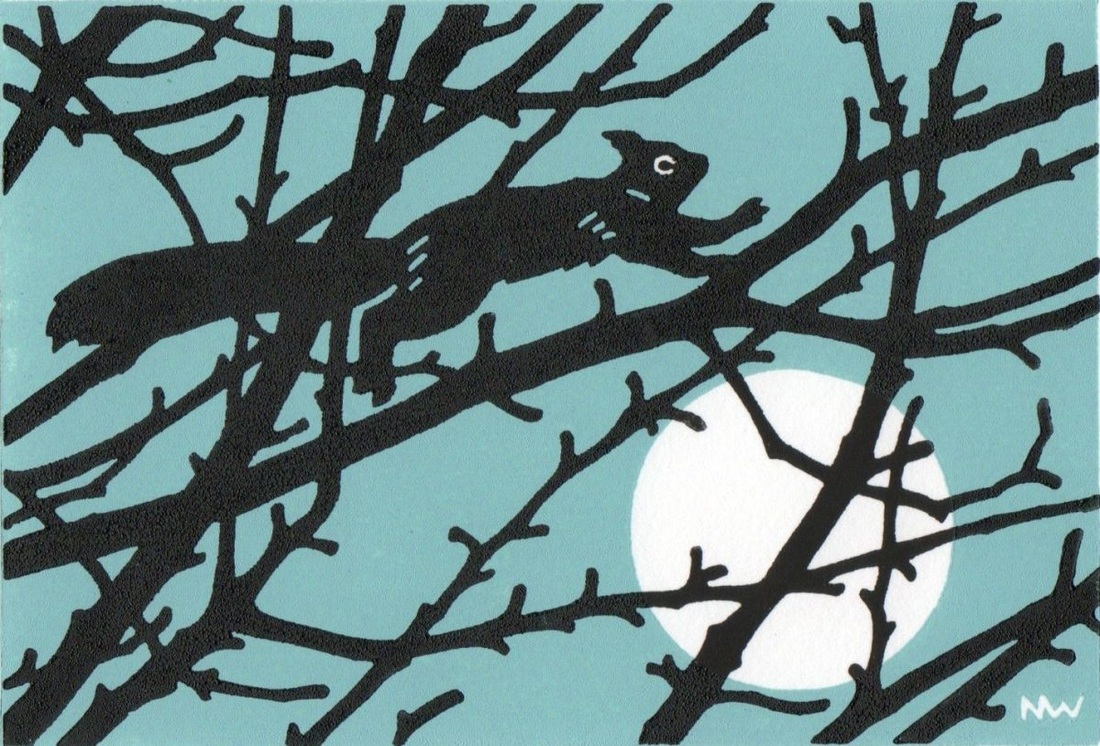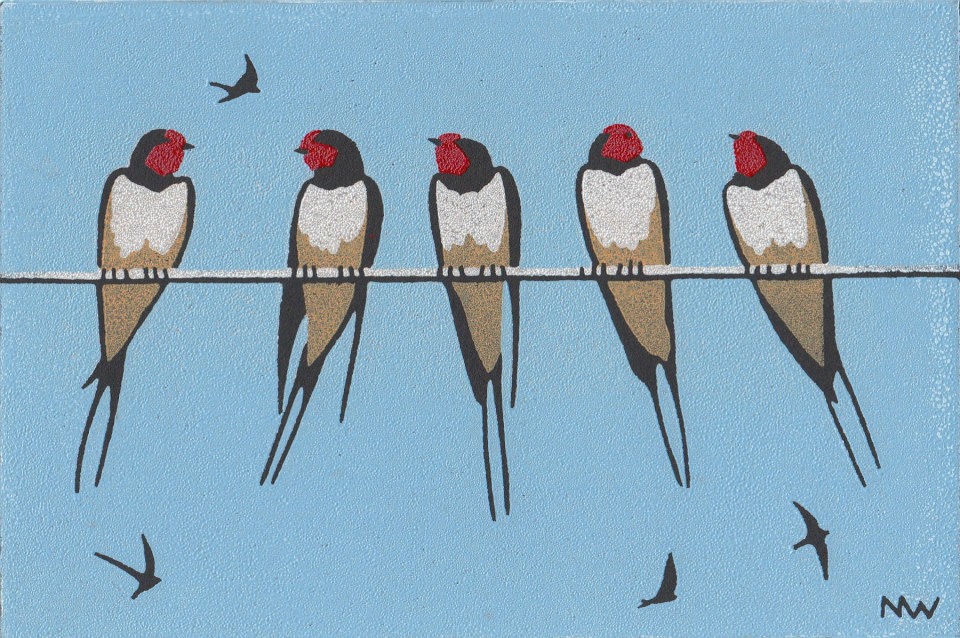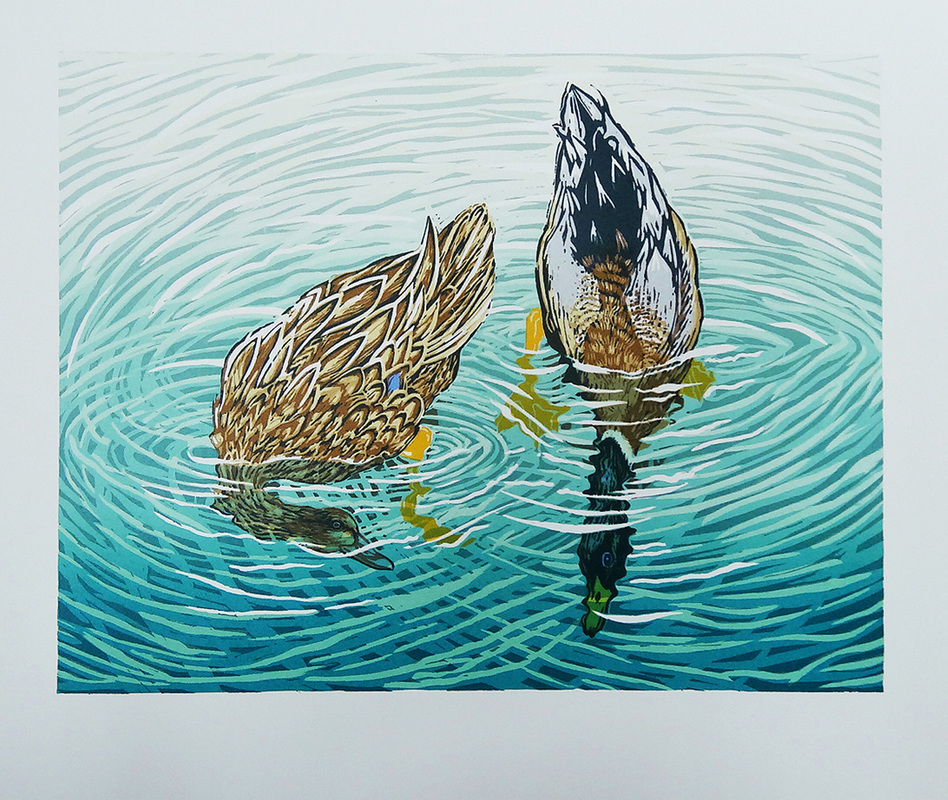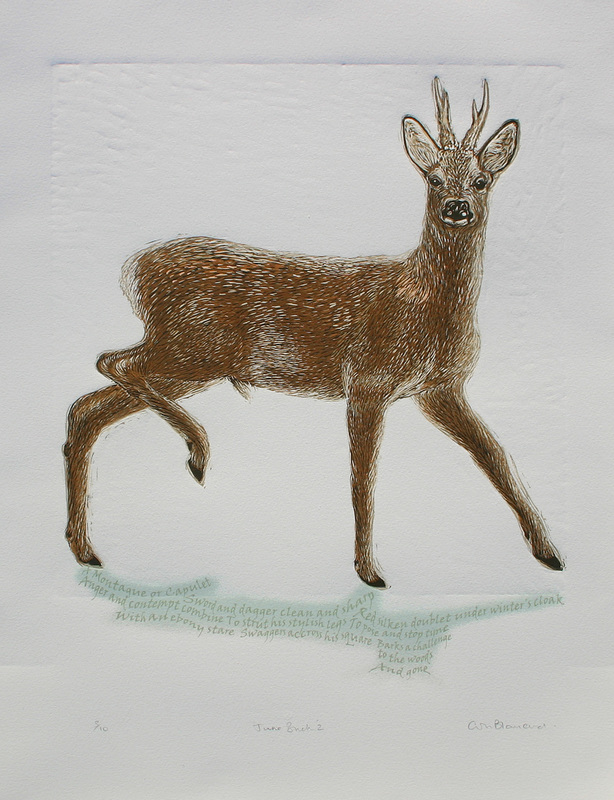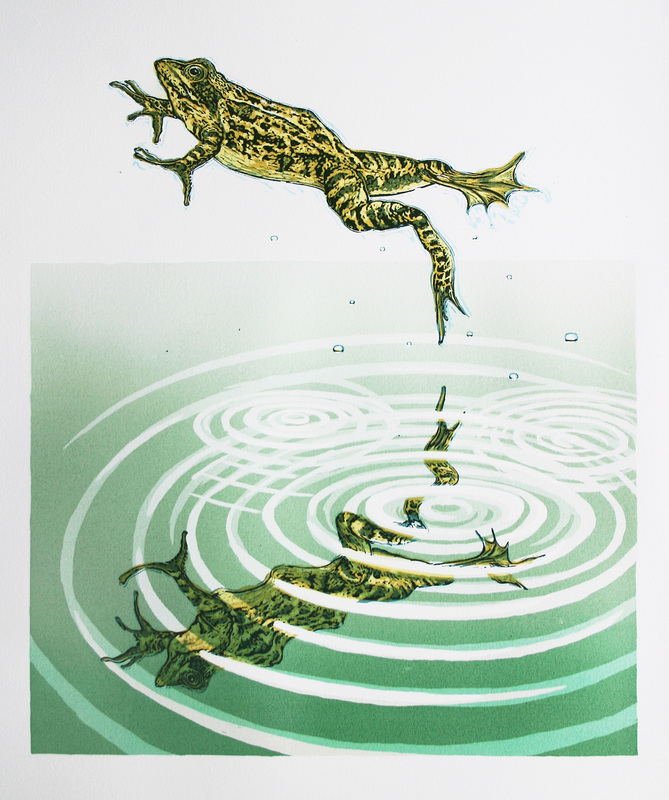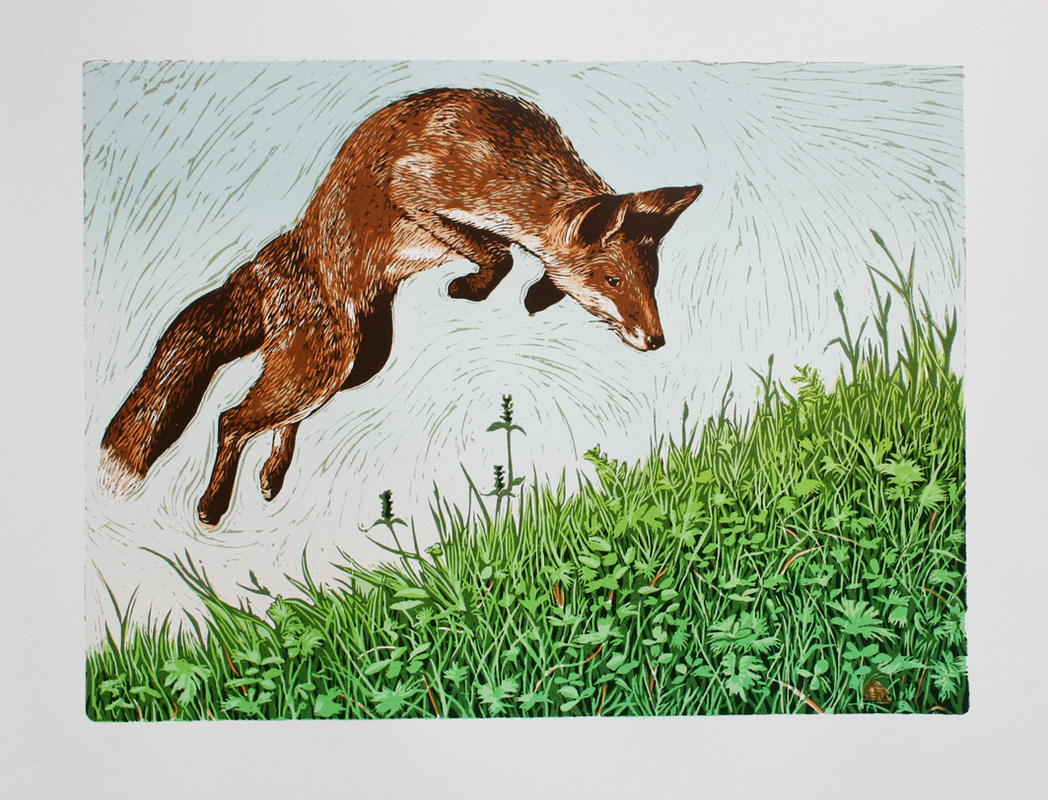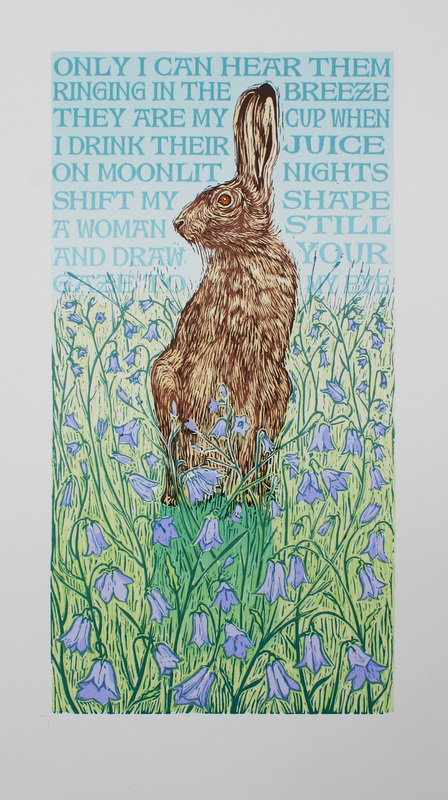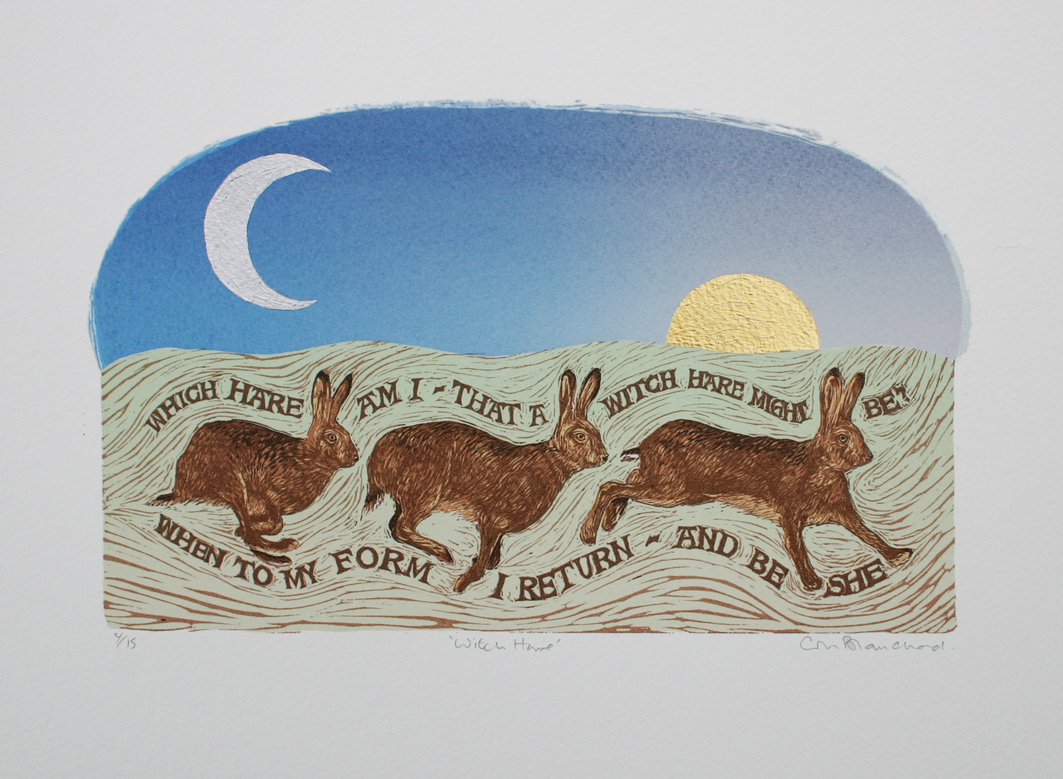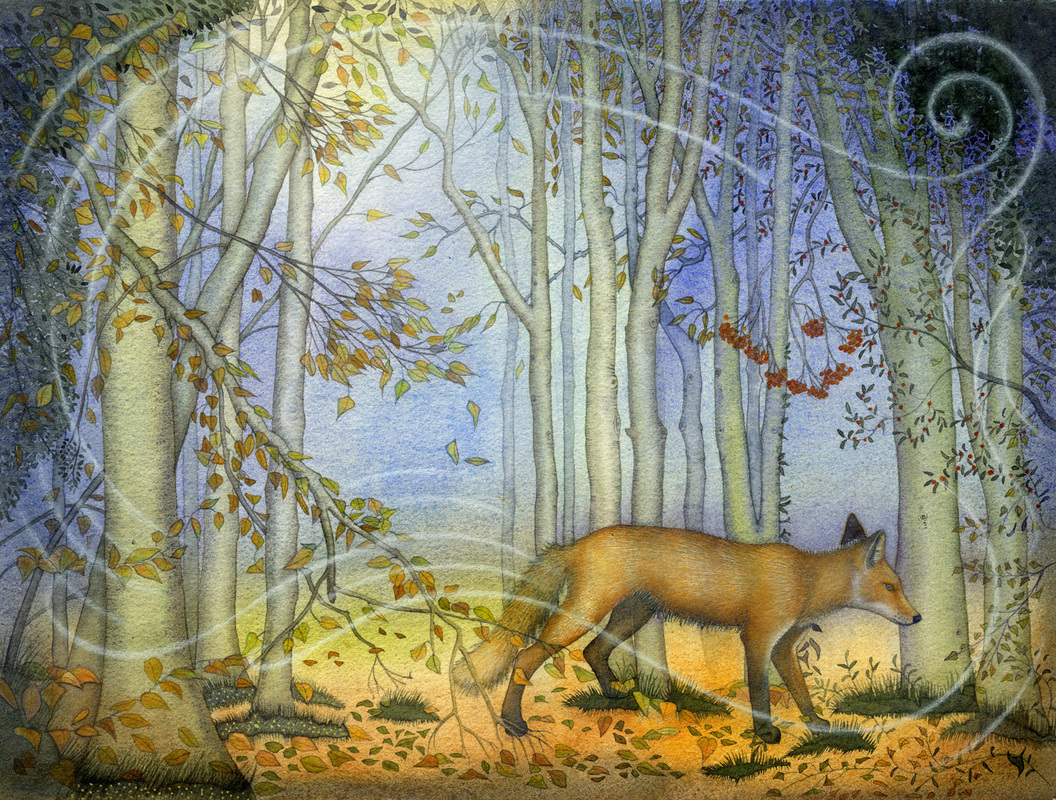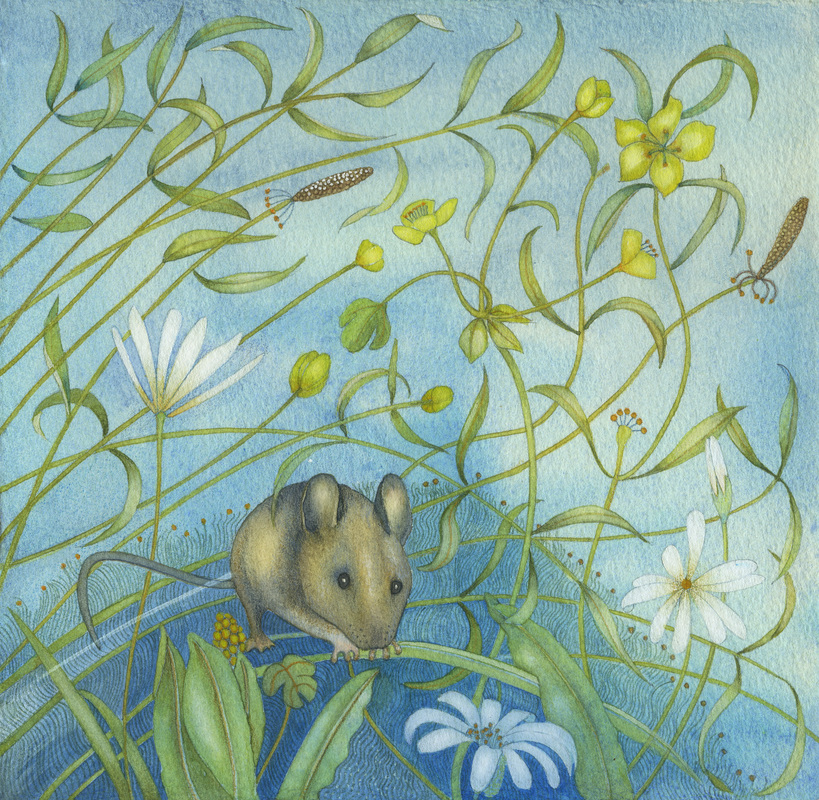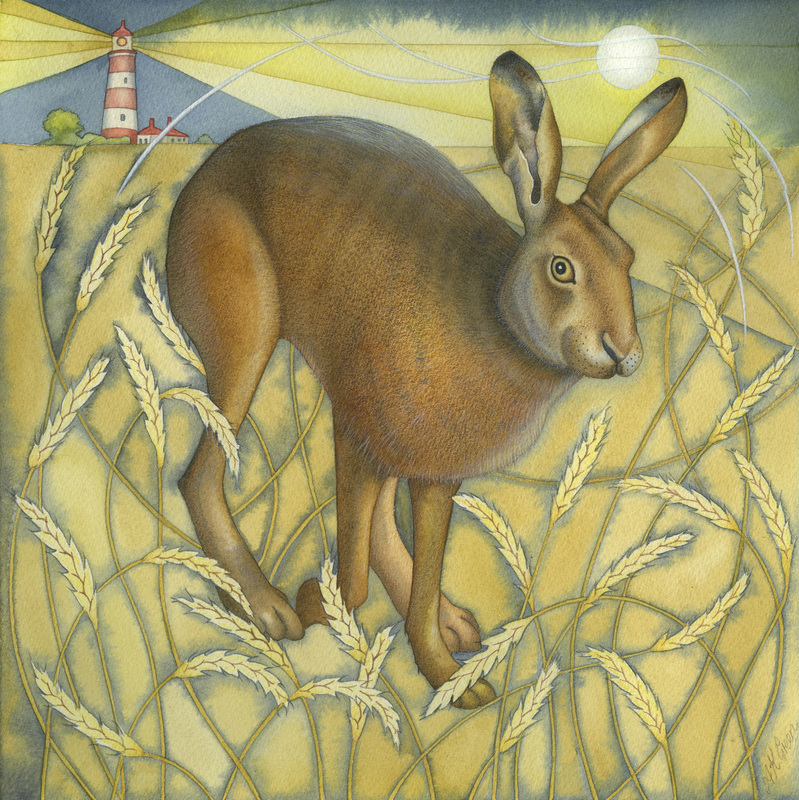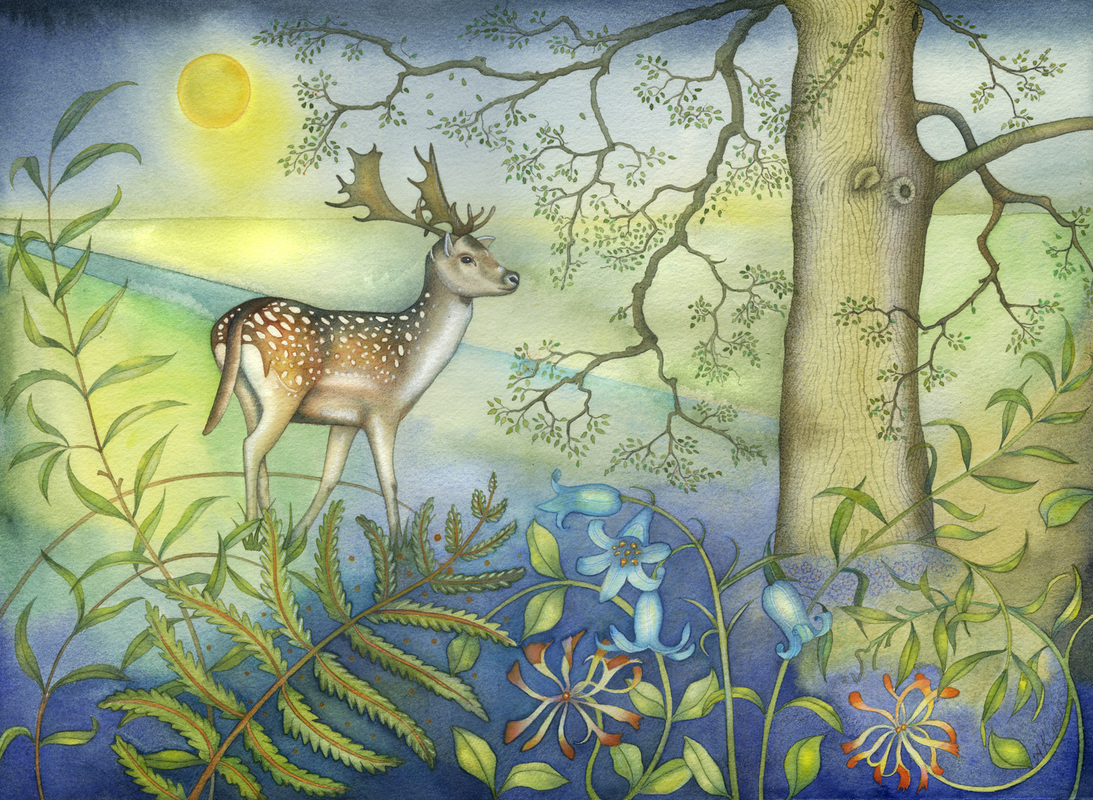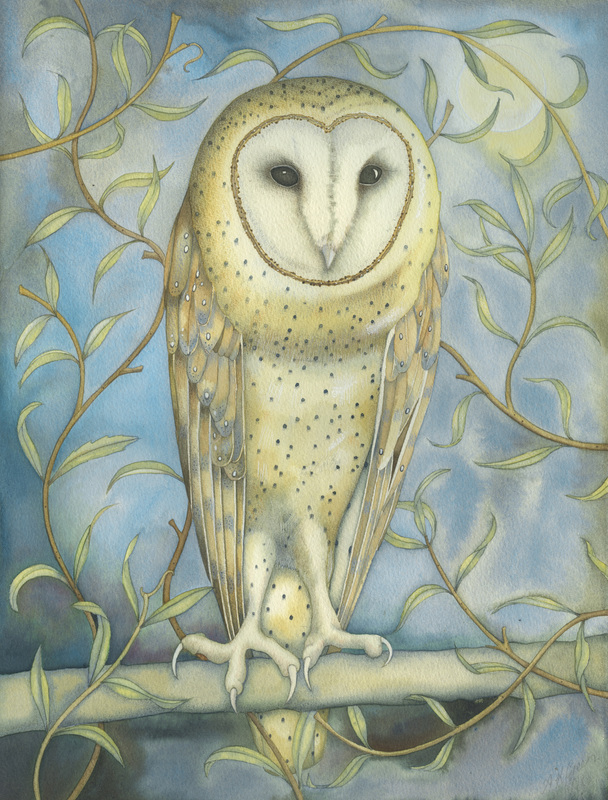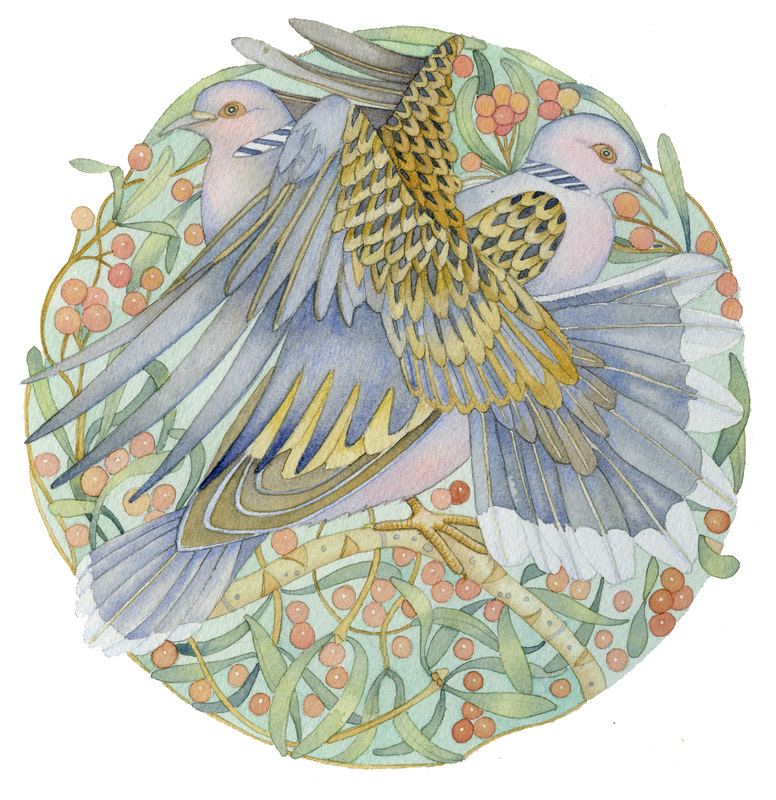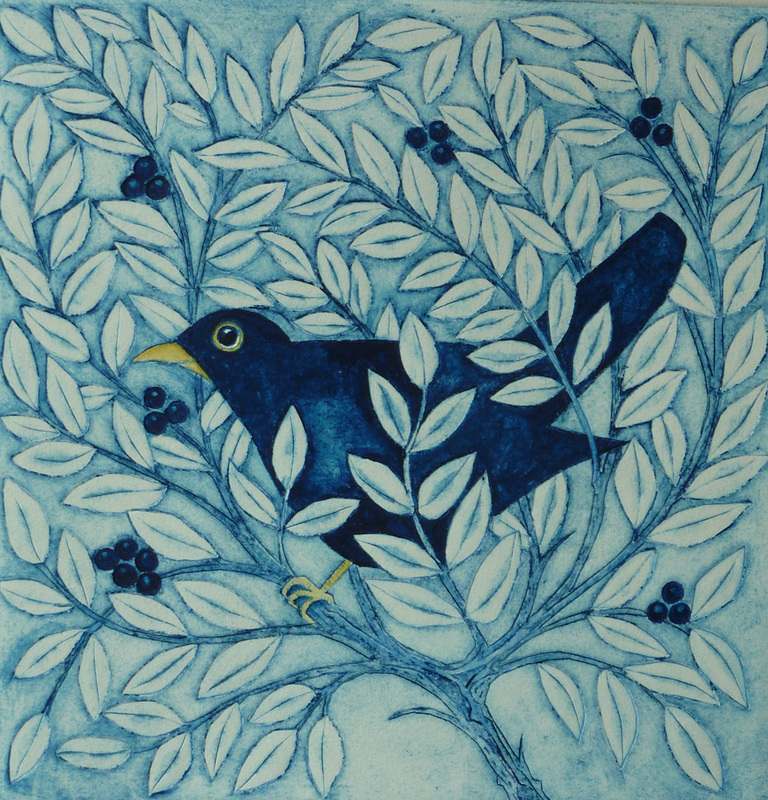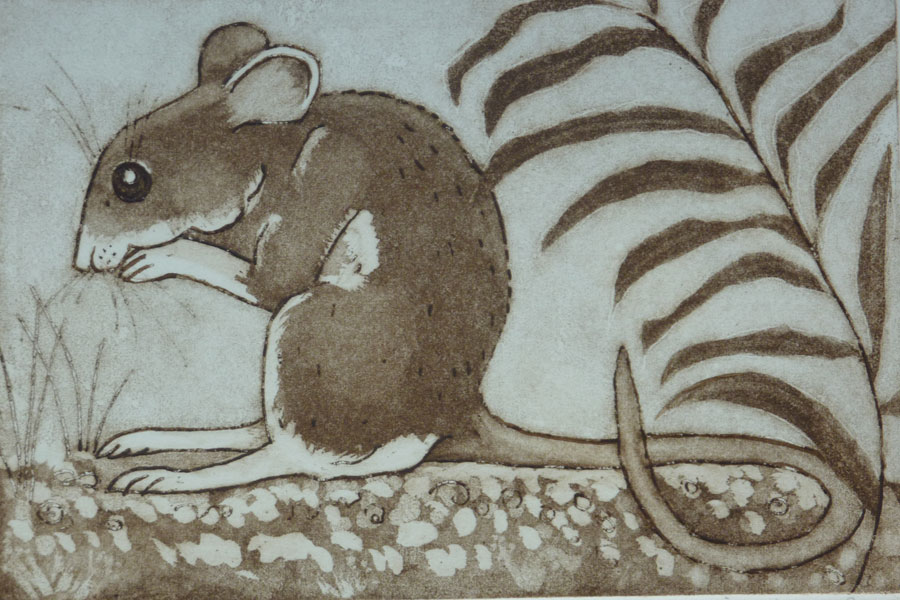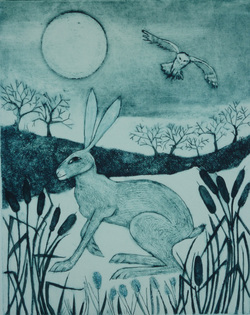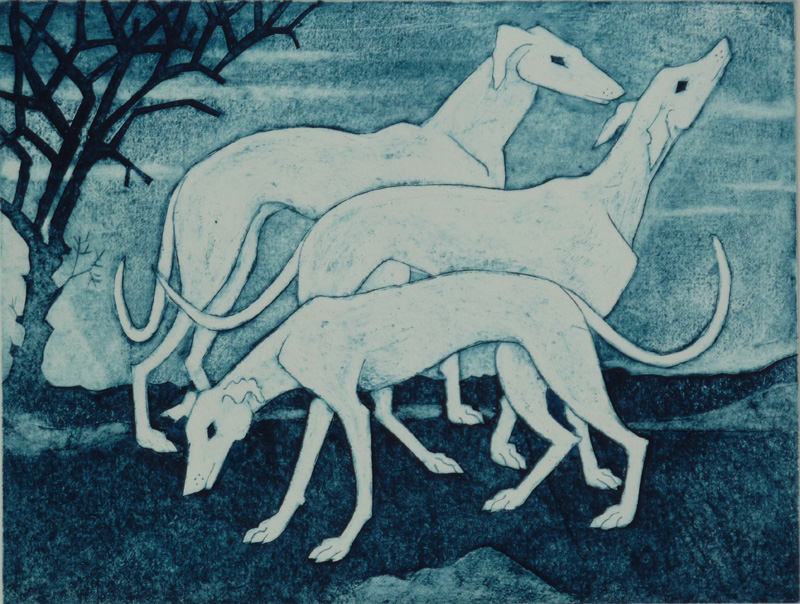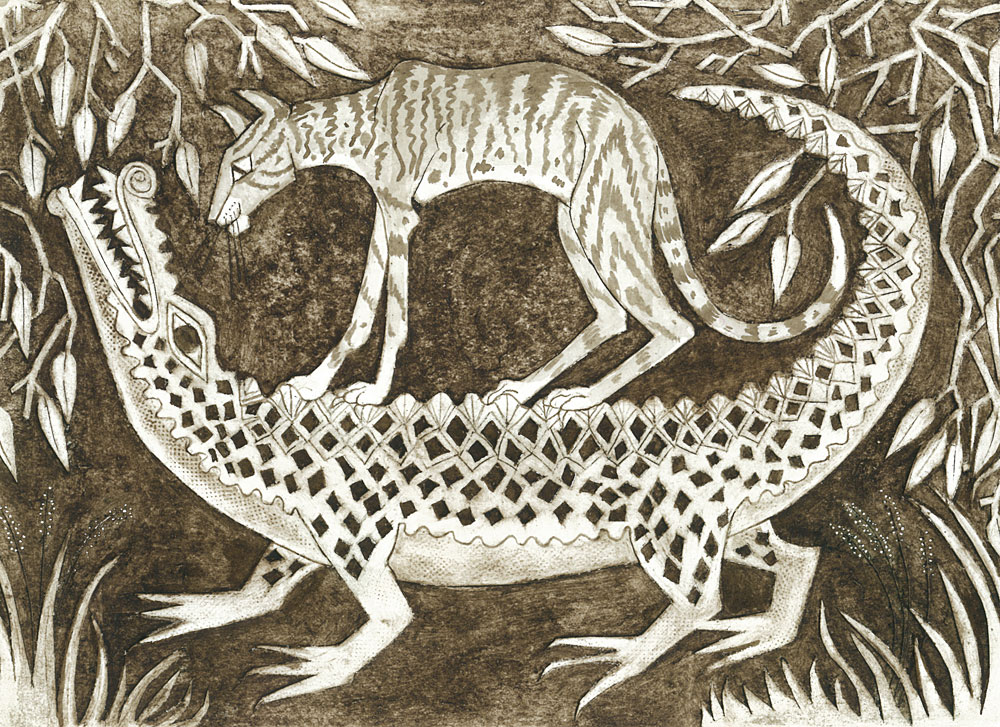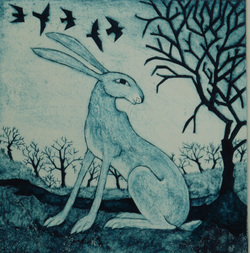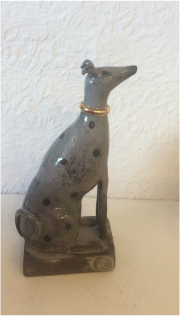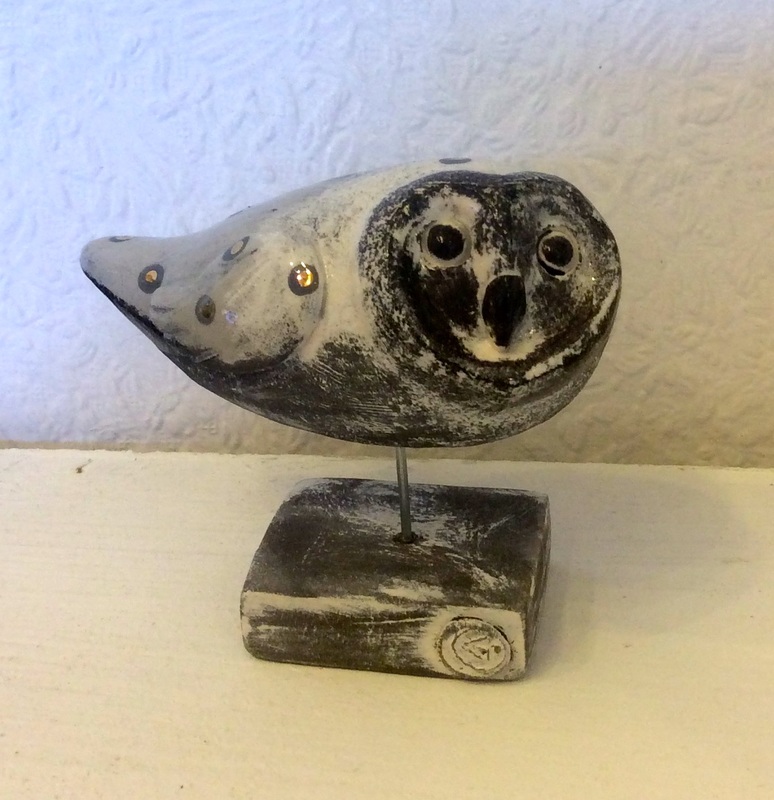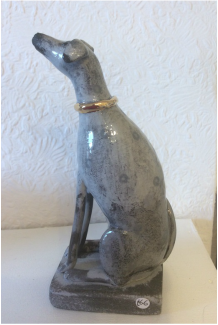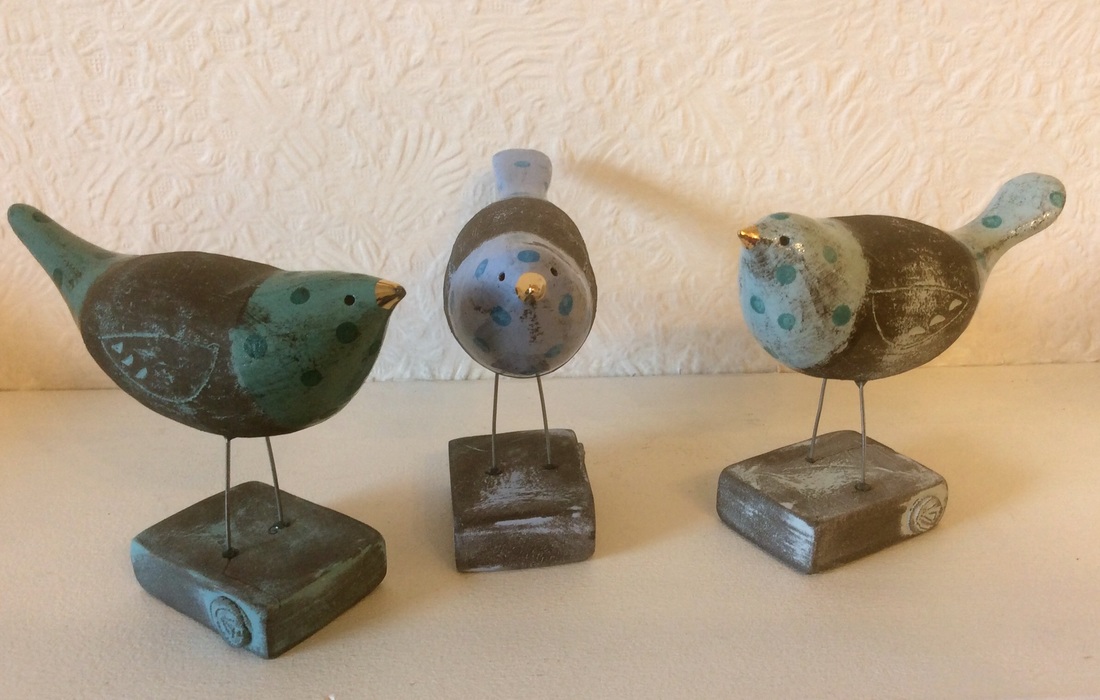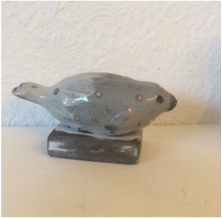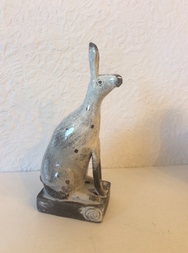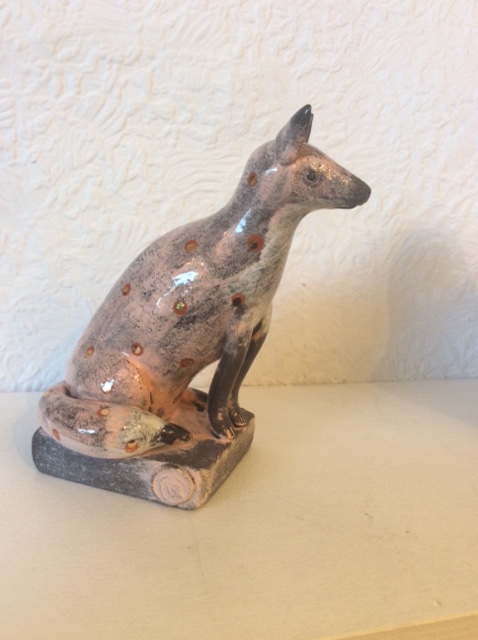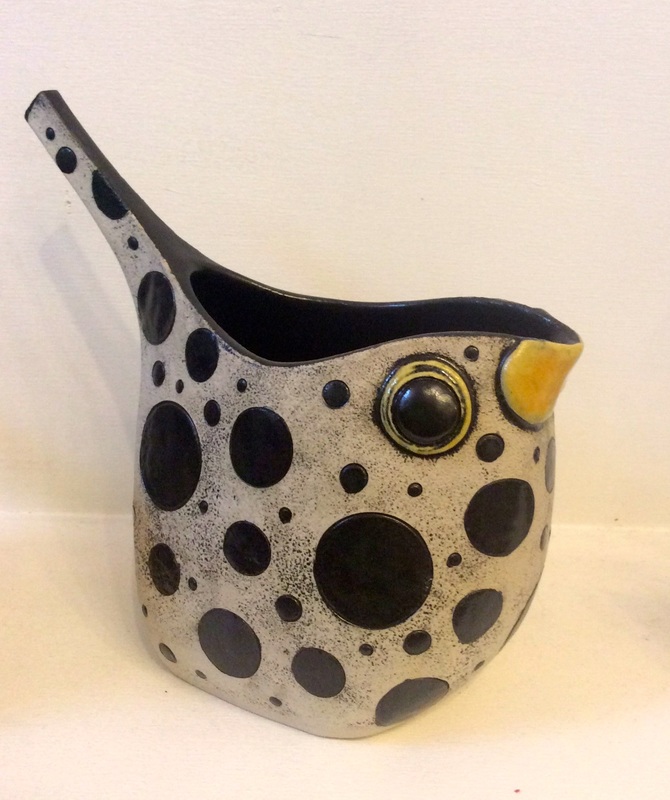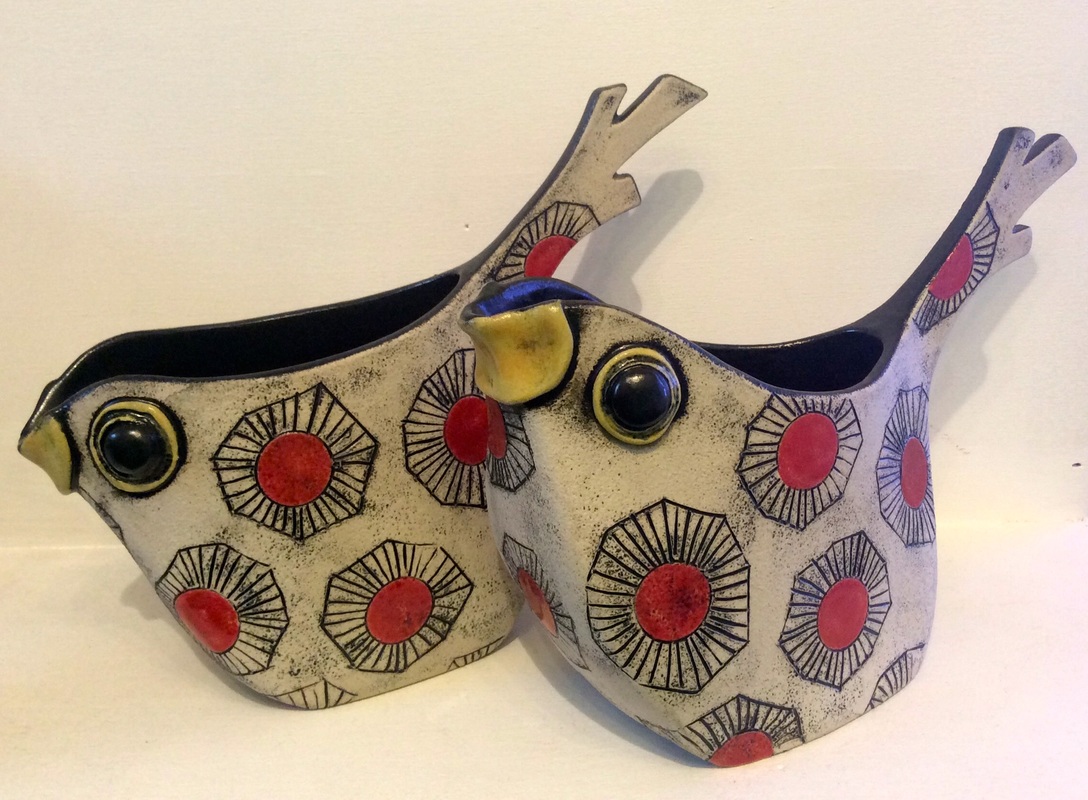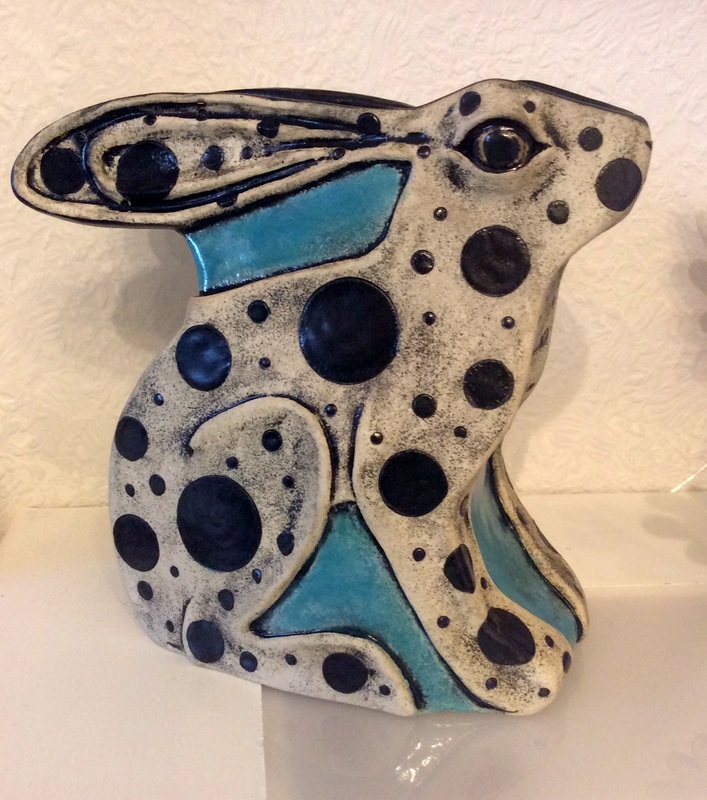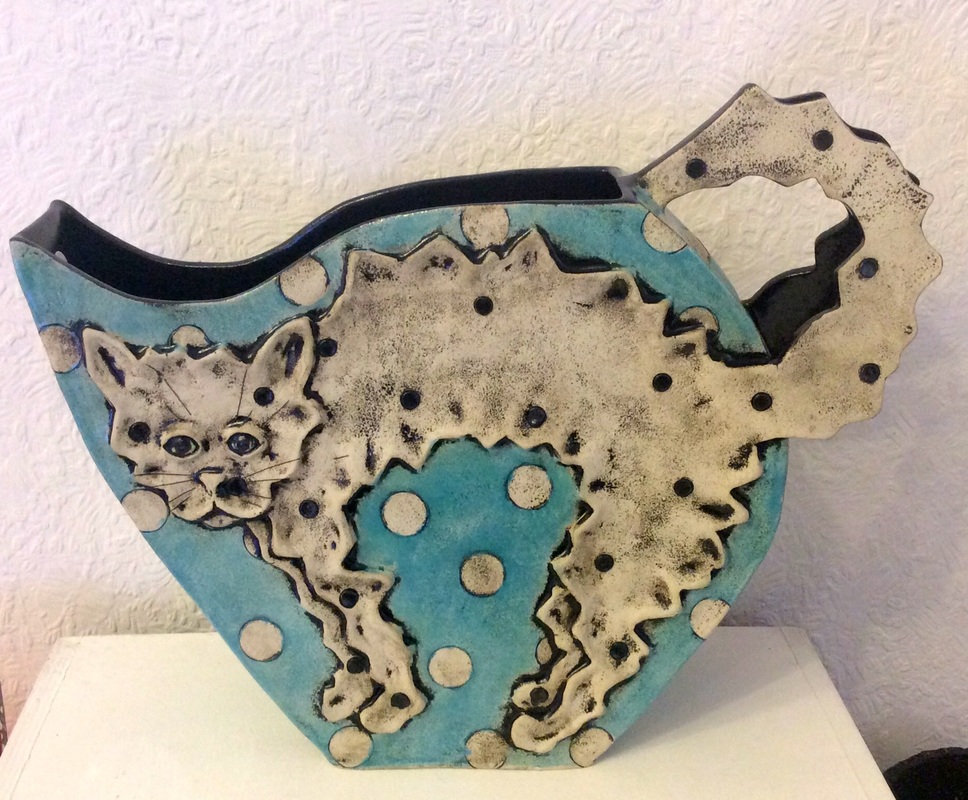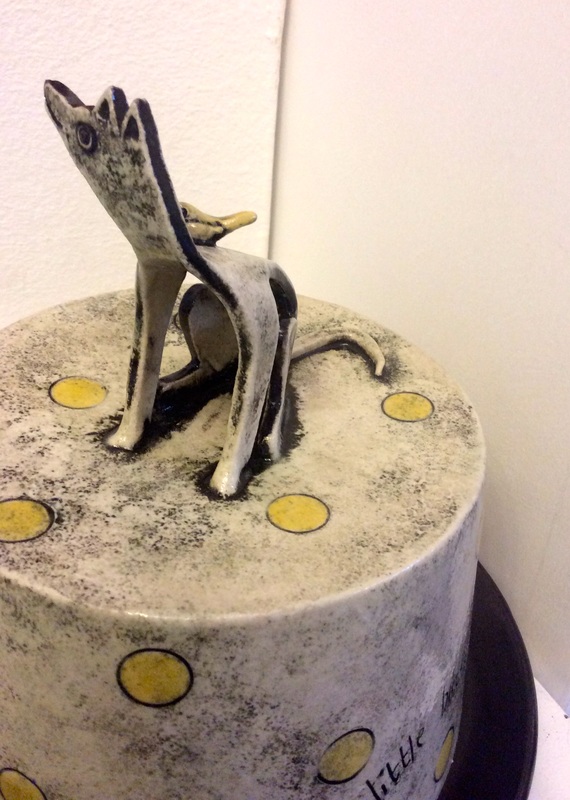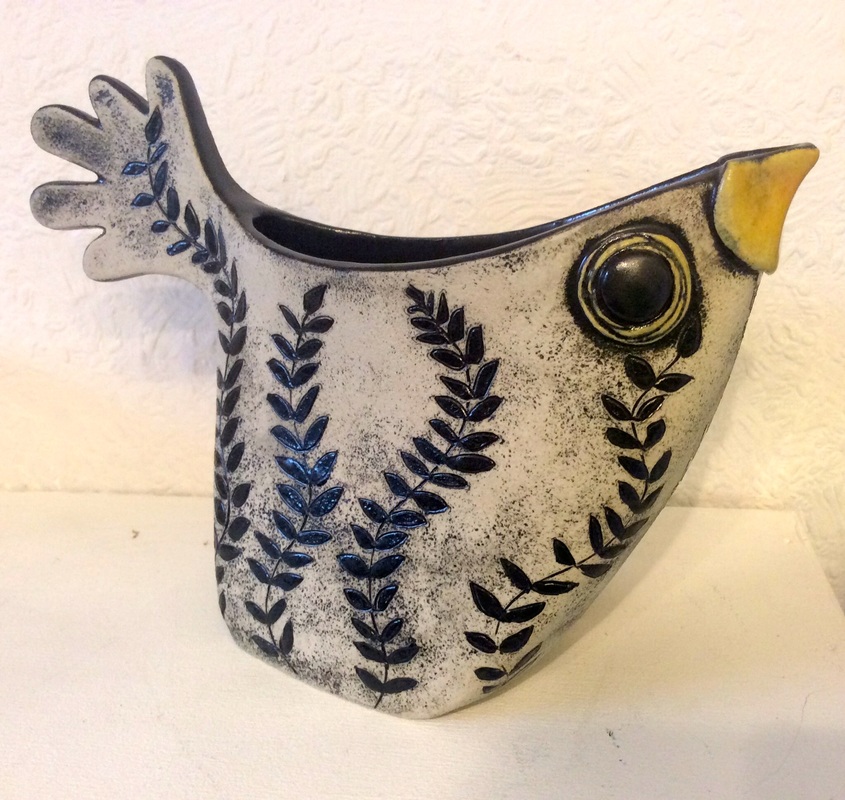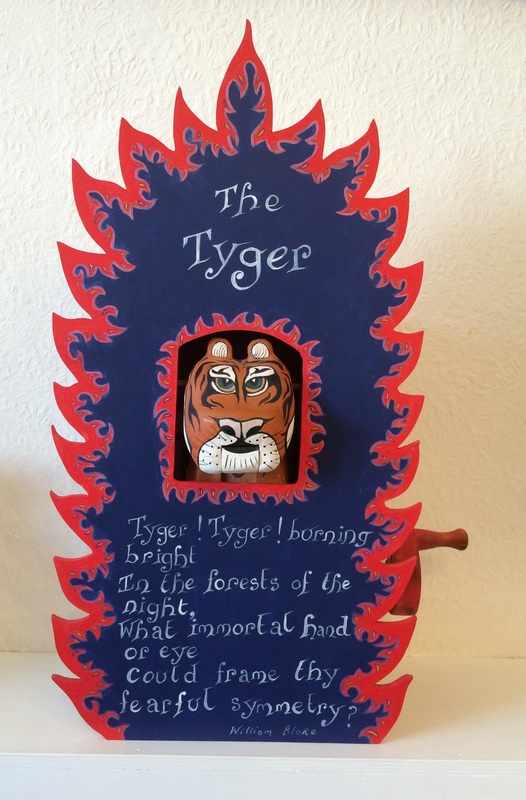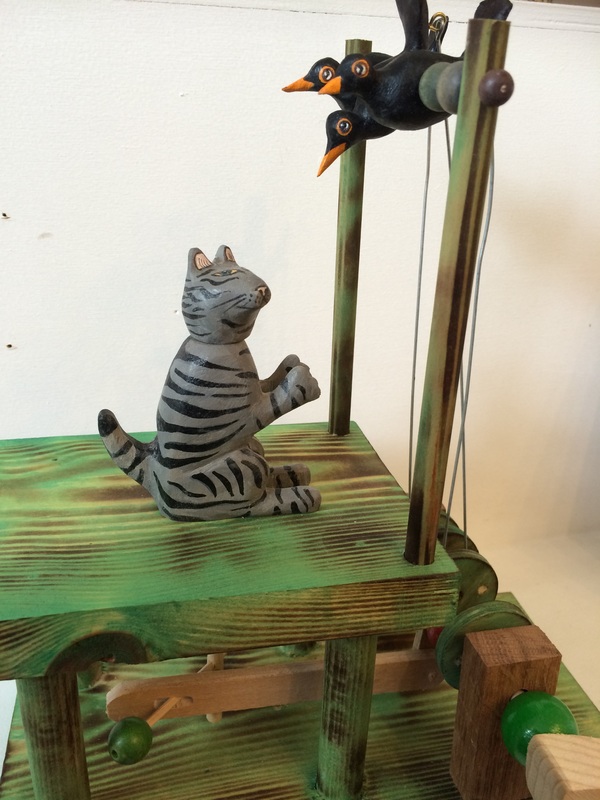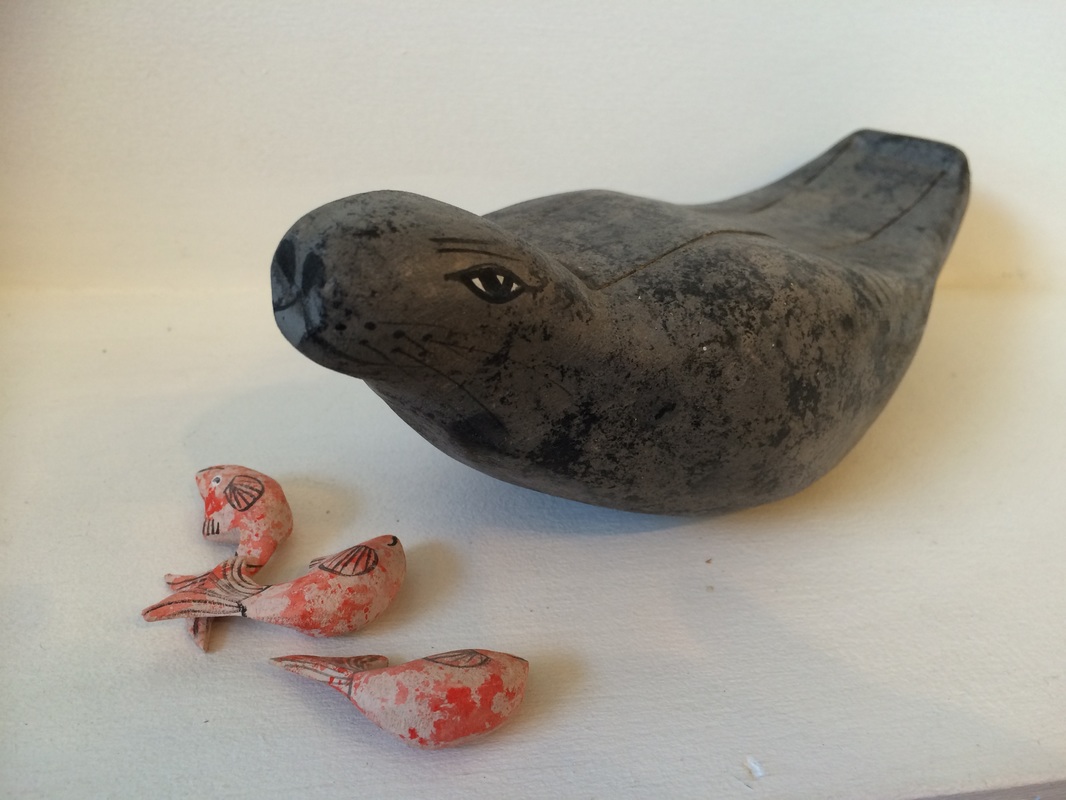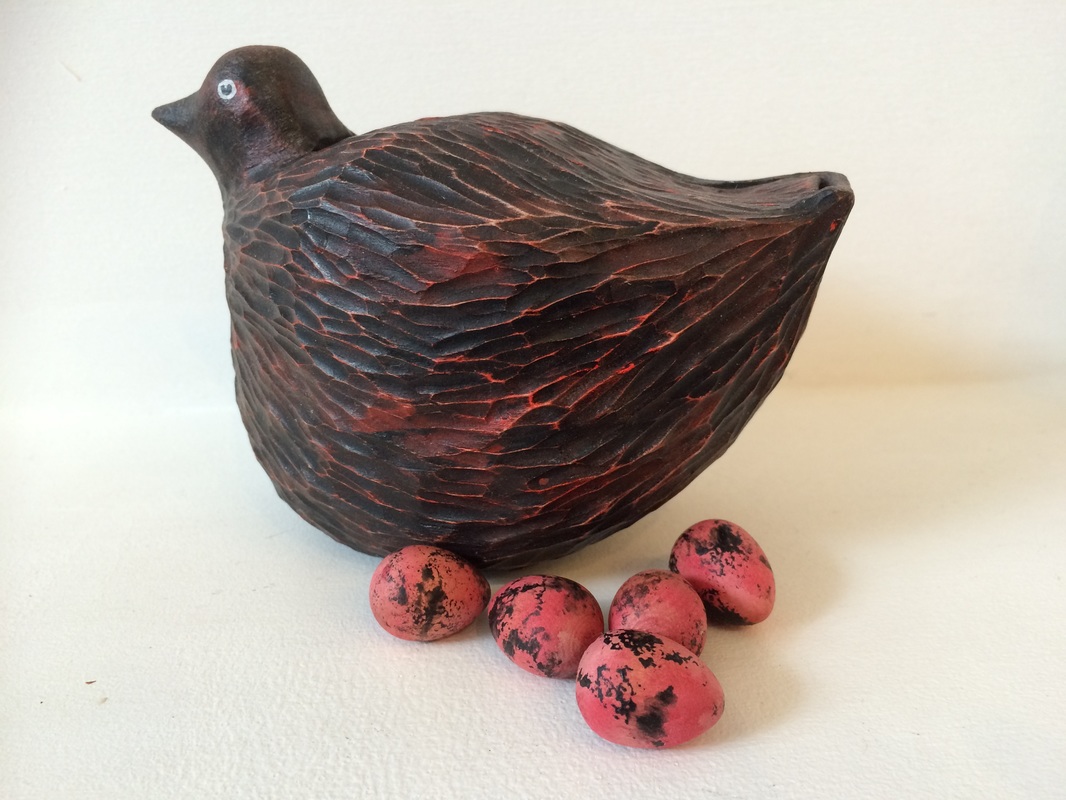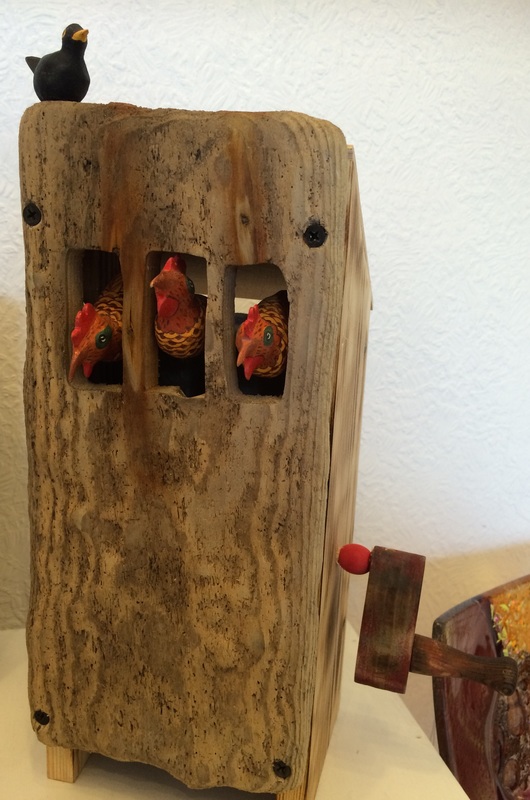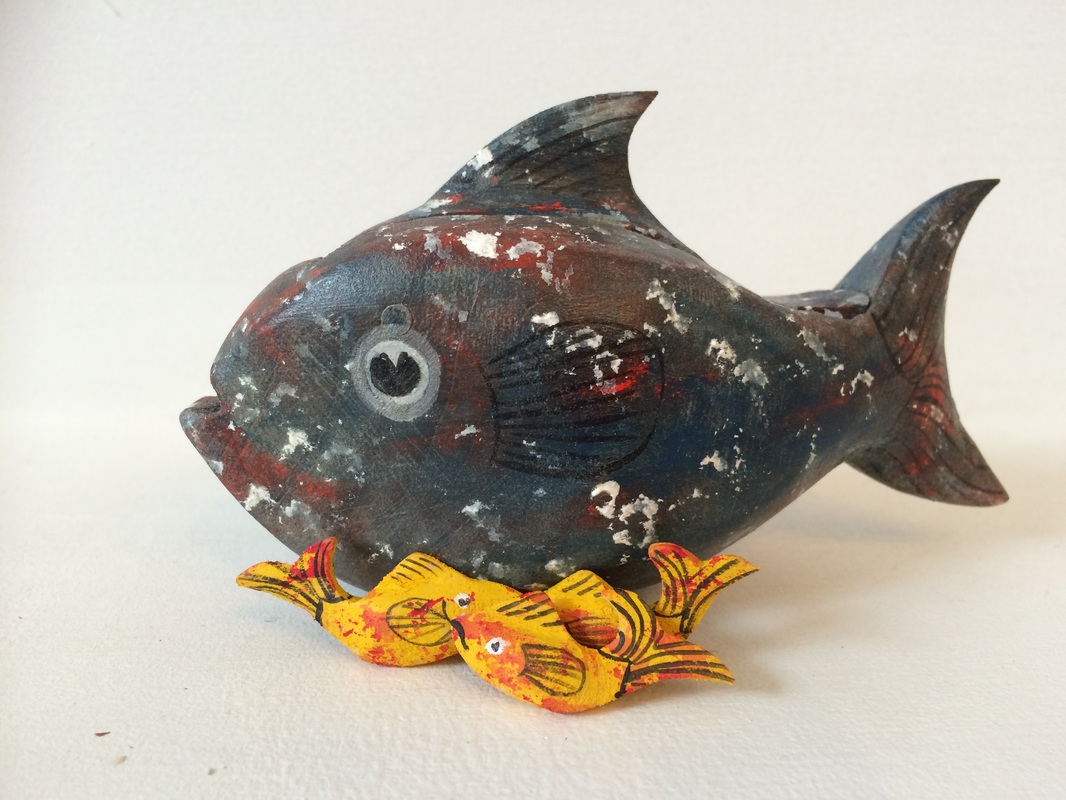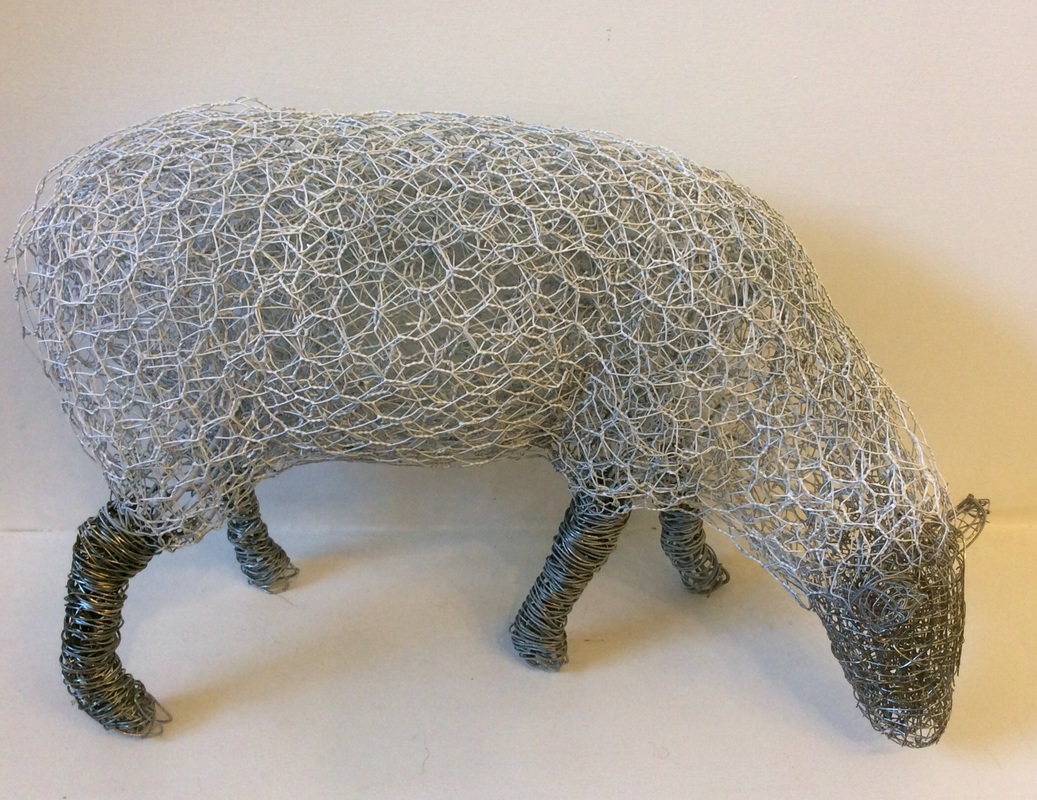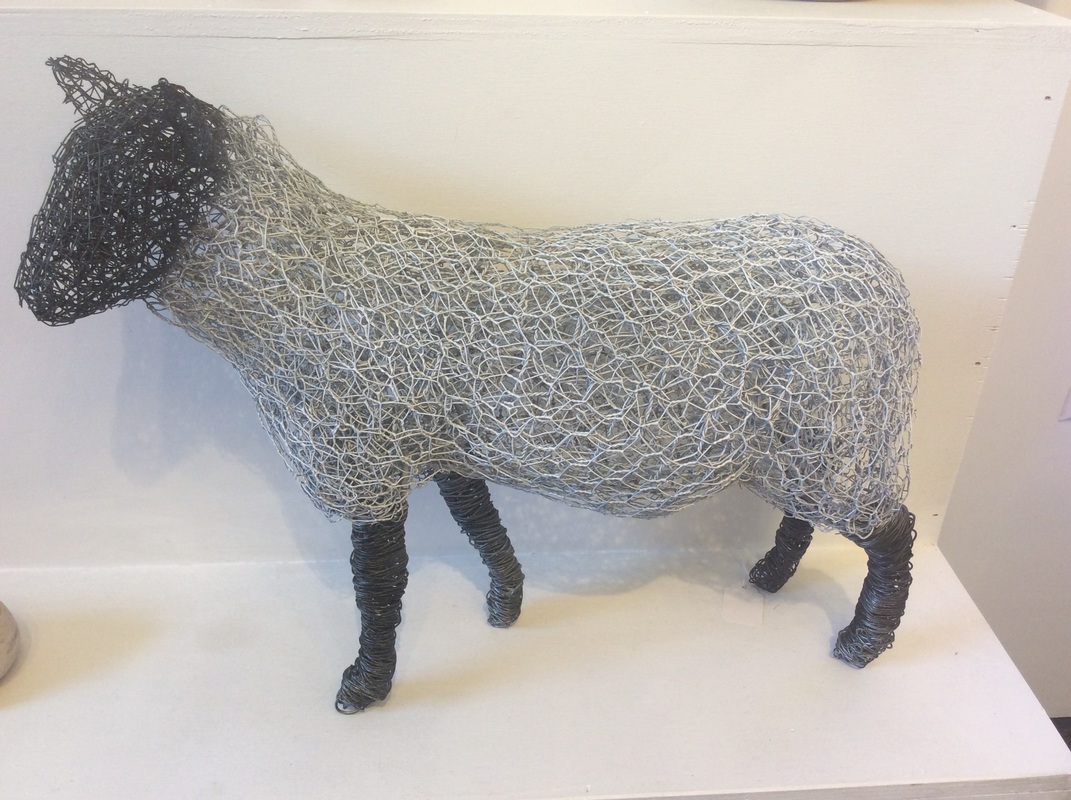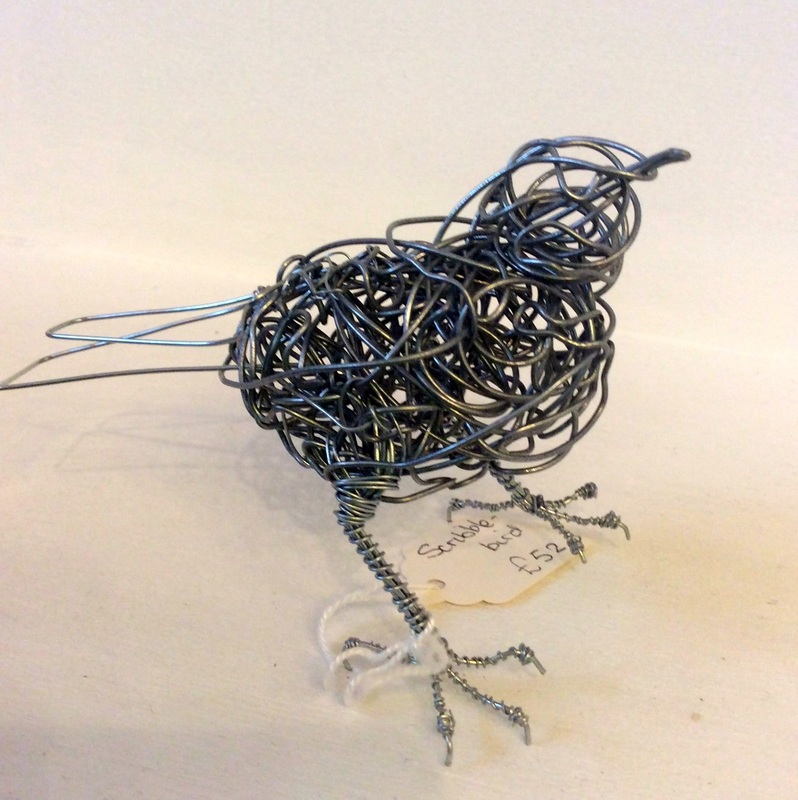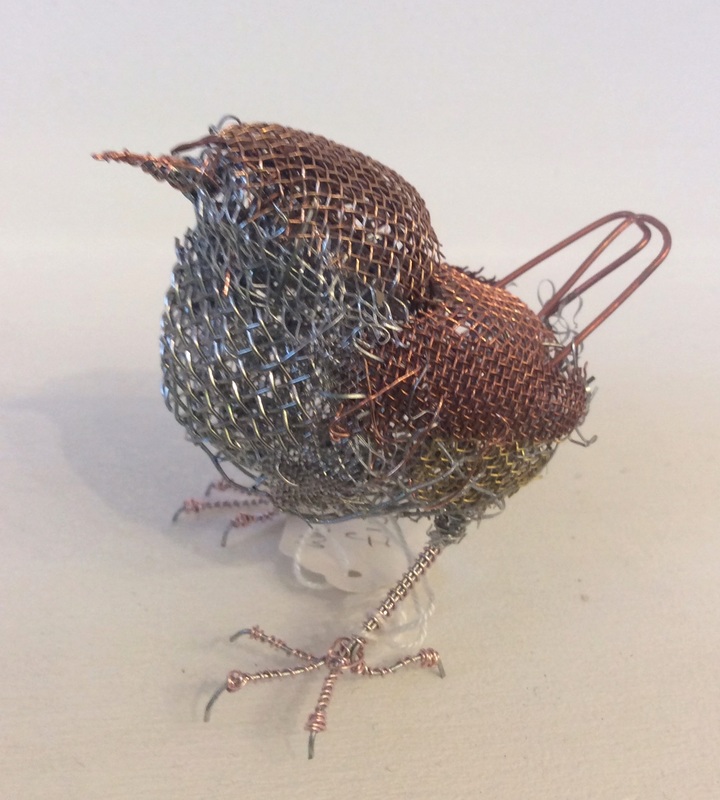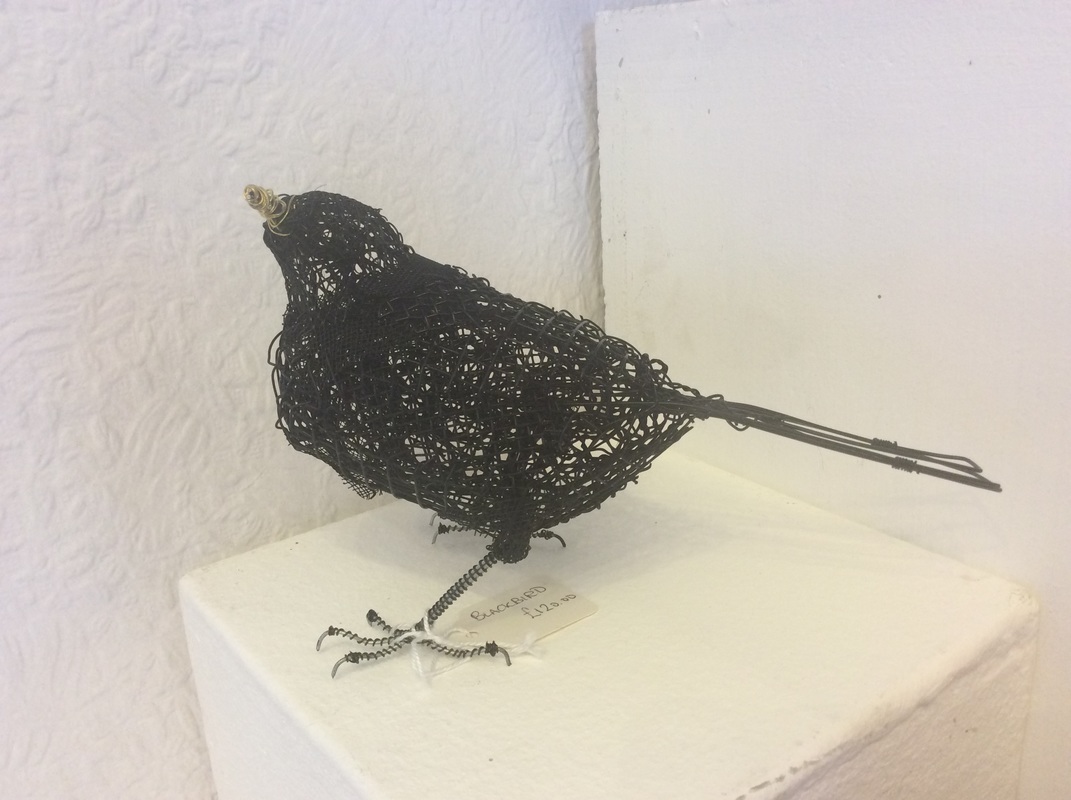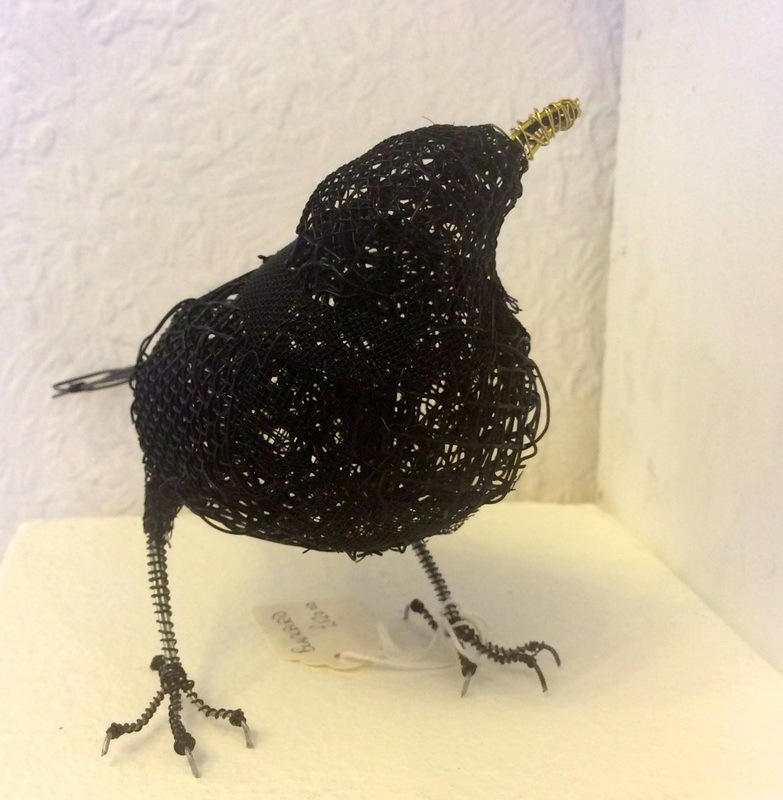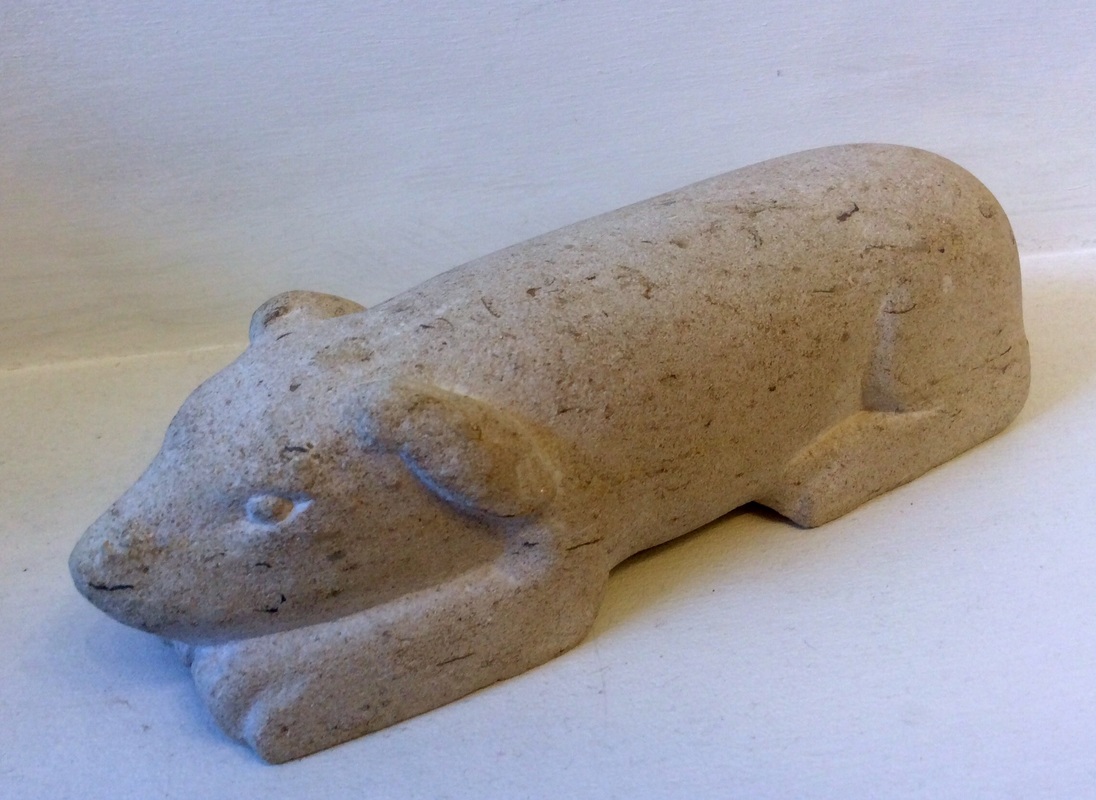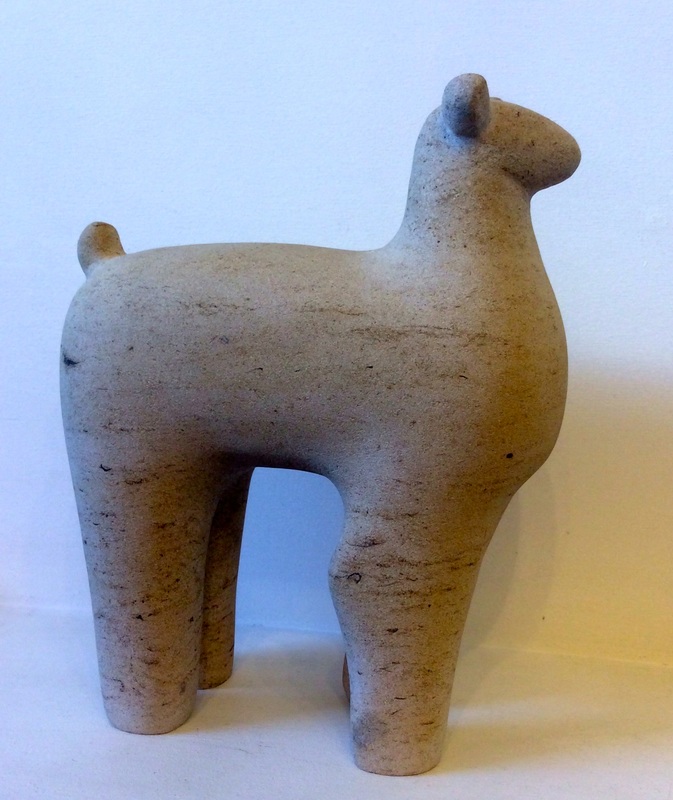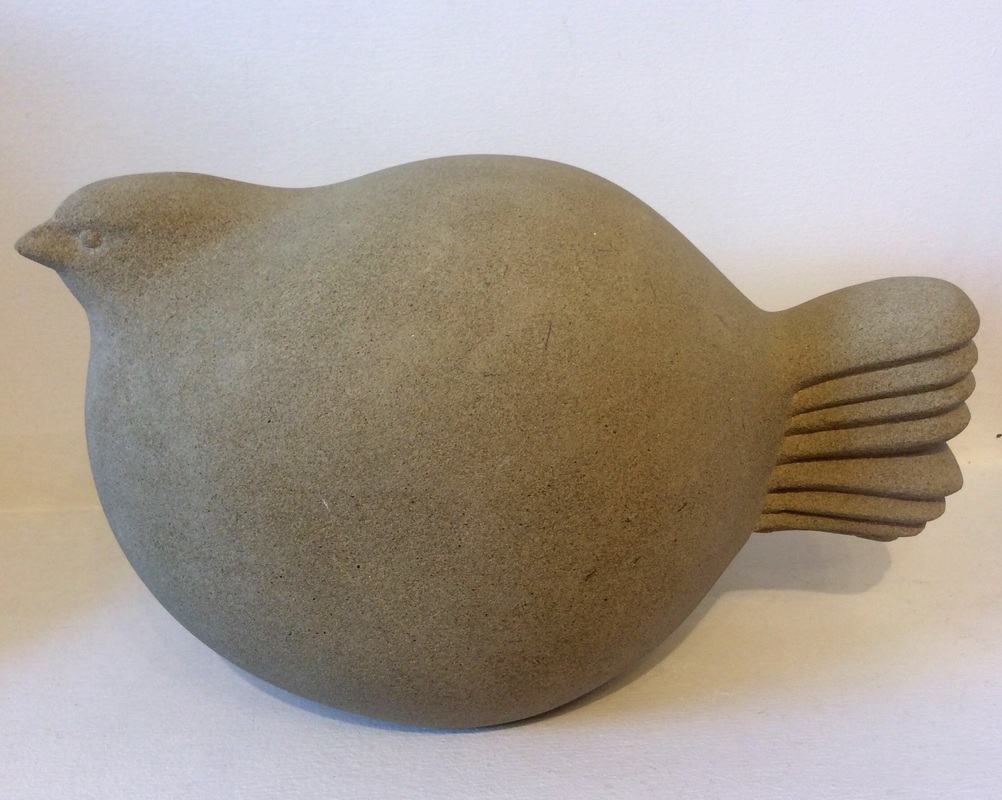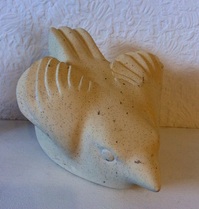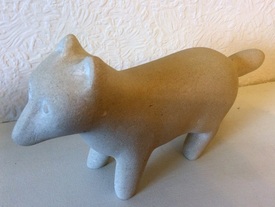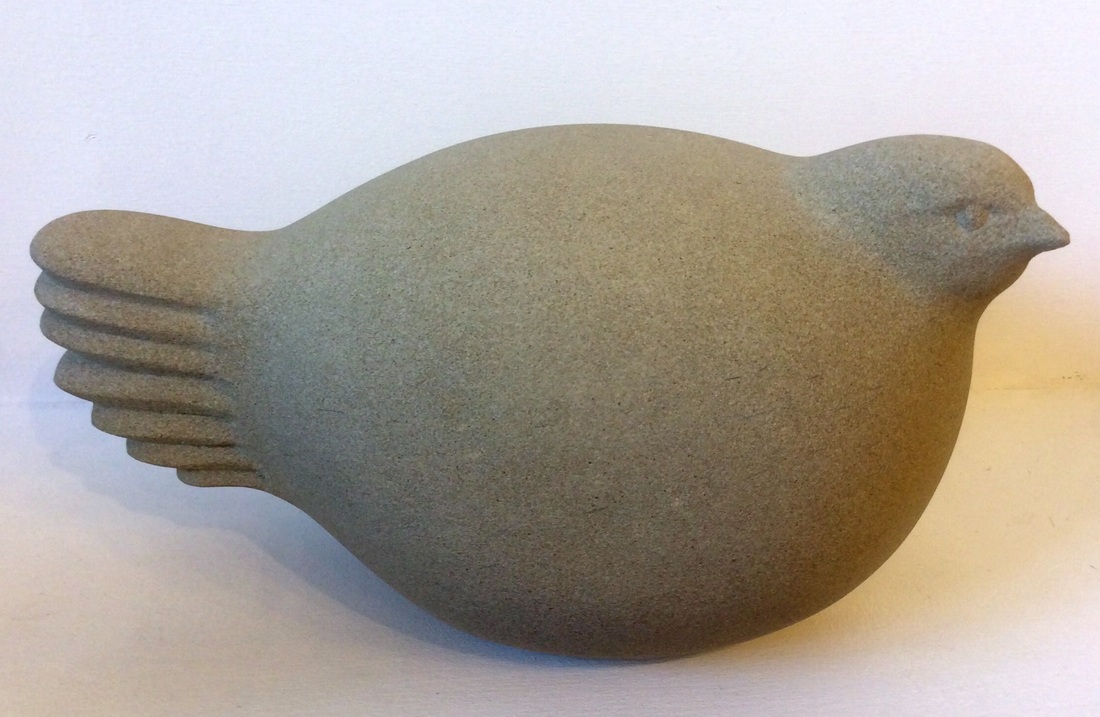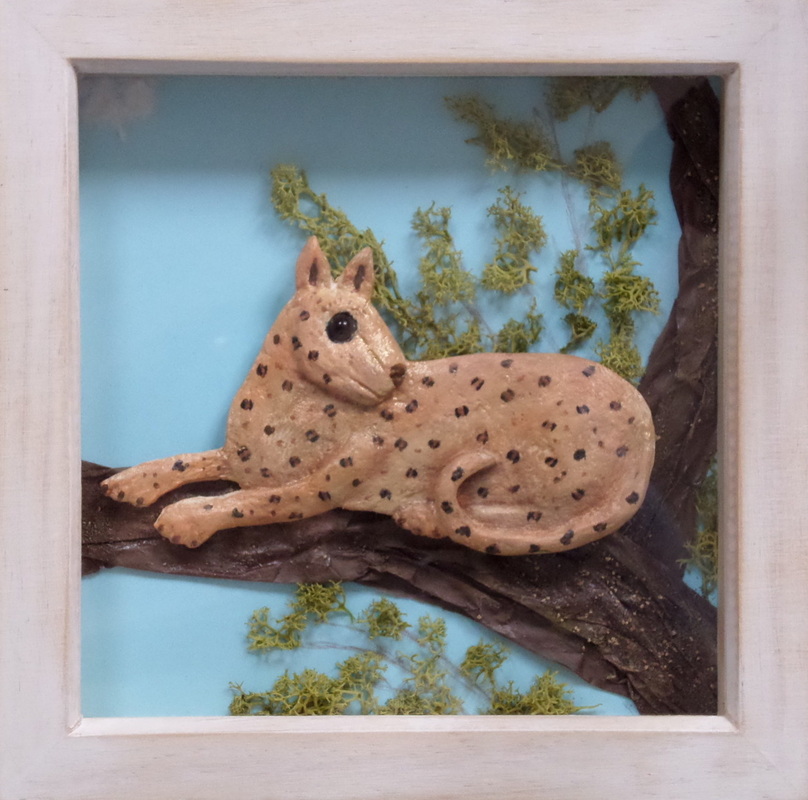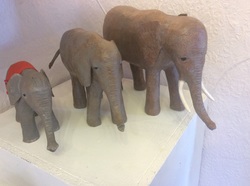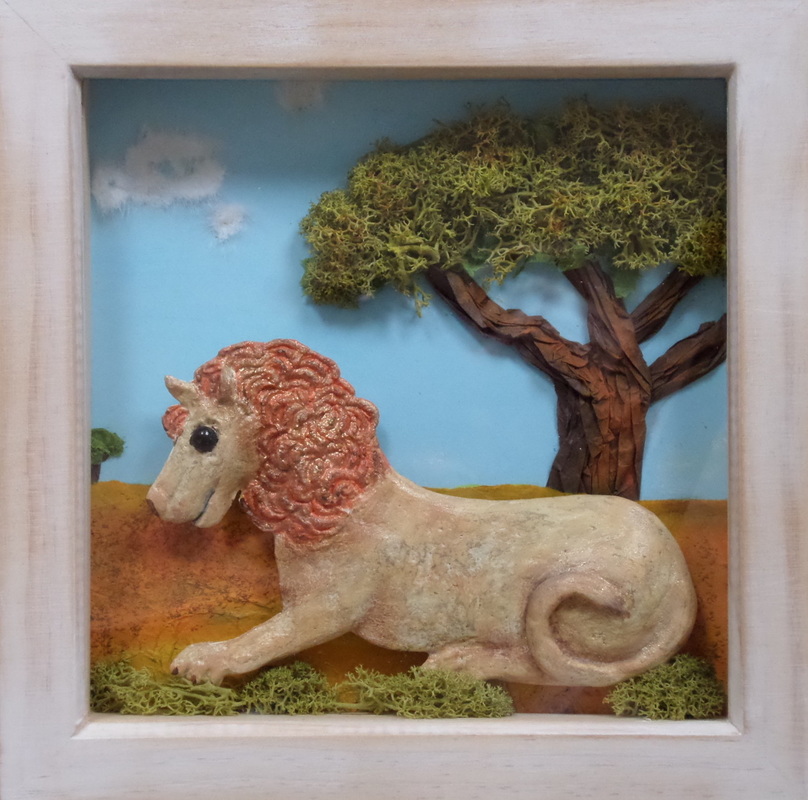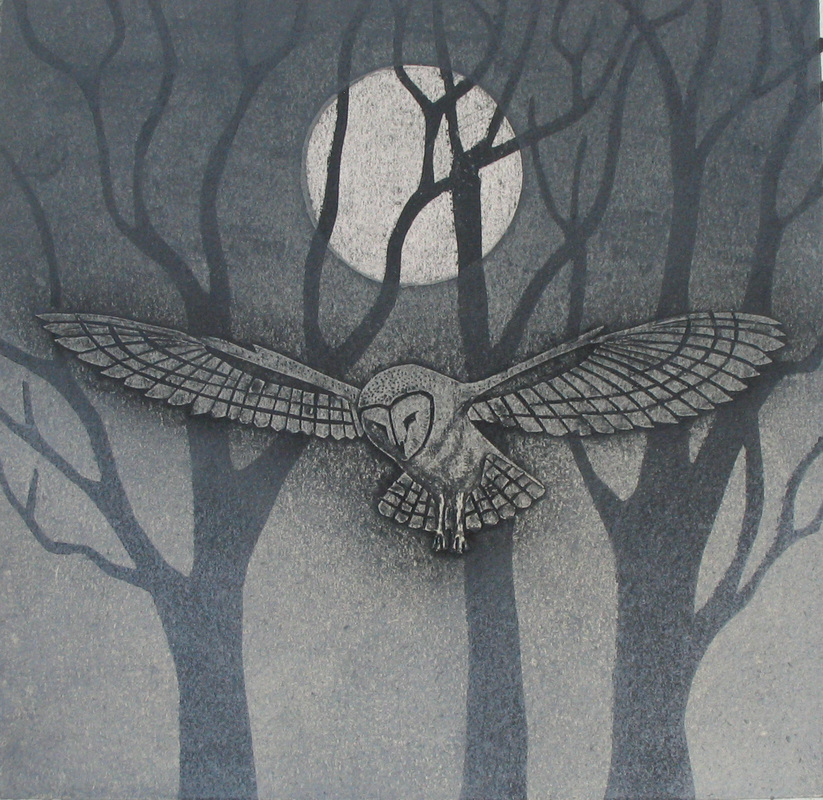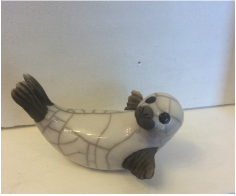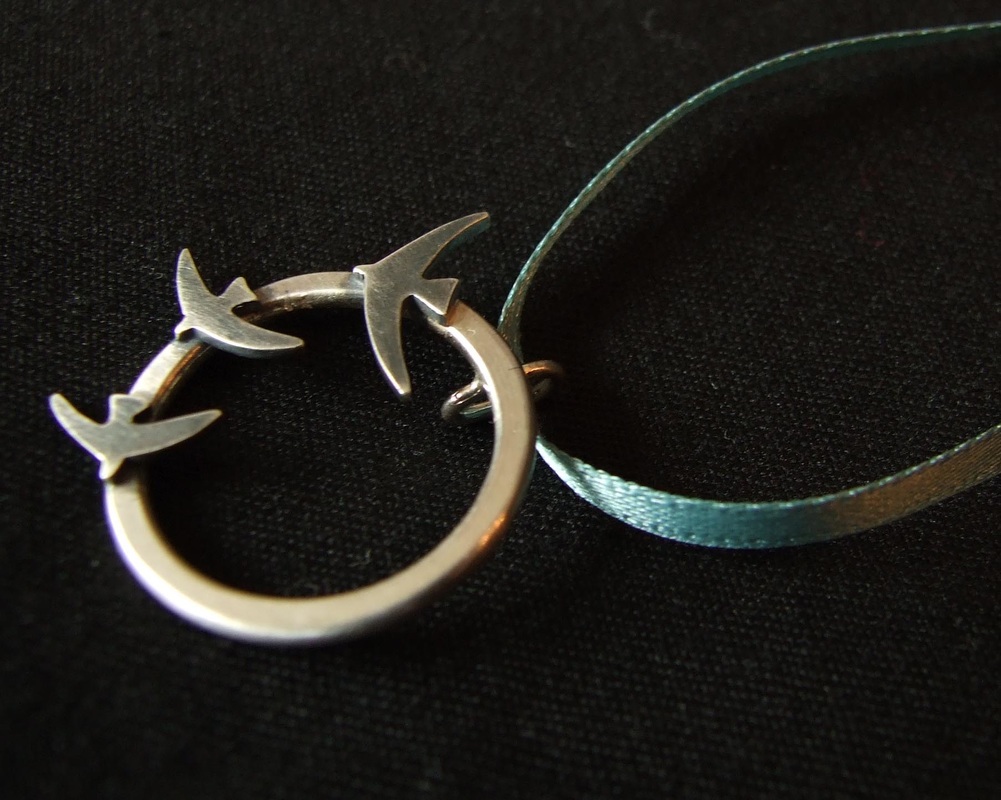A Marvellous Menagerie 15th august - 27th september 2015
A wonderful selection of work inspired by British wildlife from a wide selection of painters, printmakers, ceramicists, sculptors and others. Please contact us for availability / more details on any of these works.
Paint & print
Prices are for framed work. We may have more unframed work in stock from these artists, please contact us!
Tom Frost
Tom specialises in illustration and screen printing. He sites 1950’s packaging, folk art, tin toys, old labels, children’s books and stamps amongst his influences as an artist.
His work has featured in the many many magazines, galleries and newspapers including Radio Times, the V&A museum and a solo show at the Yorkshire Sculpture Park last year.
Tom specialises in illustration and screen printing. He sites 1950’s packaging, folk art, tin toys, old labels, children’s books and stamps amongst his influences as an artist.
His work has featured in the many many magazines, galleries and newspapers including Radio Times, the V&A museum and a solo show at the Yorkshire Sculpture Park last year.
Nick Wonham
I graduated from Camberwell College of Art with a BA hons degree in illustration in 1991. I then completed a one year PGCE in secondary art teaching at Goldsmiths College.
The subject matter of my art often derives from my love of nature, but I am also inspired by fairytales, nursery rhymes, and poetry. I like incorporating bold compositions with an abstract quality and often use complimentary colours. Influences are many and varied, but amongst printmakers I admire Rigby Graham and Edward Bawden.
I have had two books, illustrated with linocuts, published by Incline Press.When not working hard at my art, I work as a teacher of students with severe learning difficulties in North London.
I graduated from Camberwell College of Art with a BA hons degree in illustration in 1991. I then completed a one year PGCE in secondary art teaching at Goldsmiths College.
The subject matter of my art often derives from my love of nature, but I am also inspired by fairytales, nursery rhymes, and poetry. I like incorporating bold compositions with an abstract quality and often use complimentary colours. Influences are many and varied, but amongst printmakers I admire Rigby Graham and Edward Bawden.
I have had two books, illustrated with linocuts, published by Incline Press.When not working hard at my art, I work as a teacher of students with severe learning difficulties in North London.
Colin Blanchard
I continue to be fascinated by the possibilities of using contemporary technology in conjunction with high levels of traditional printmaking craft skills to create truly original prints.
I am interested in images and objects that are not in any way reproductions or imitations of any other medium, but that have the techniques, qualities and effects and that only handmade prints can offer; along with the advantages of producing multiples in (genuinely limited) editions. Like most printmakers, I still enjoy exploring and mastering new and different hands-on printmaking skills which in turn constantly evolves and develops my imagery and print qualities.
In my work I want to explore the possibilities of making images that are, in one way, those of traditional ‘countryside’ and/or wildlife subject matter, but that take a less ‘traditional’ approach. Also this year I have continued to develop a theme of incorporating my own poetry as an integral part of the prints I produce; both compositionally and as a means to expand my communication to the viewer regarding my reaction to and inspiration from the subject
I continue to be fascinated by the possibilities of using contemporary technology in conjunction with high levels of traditional printmaking craft skills to create truly original prints.
I am interested in images and objects that are not in any way reproductions or imitations of any other medium, but that have the techniques, qualities and effects and that only handmade prints can offer; along with the advantages of producing multiples in (genuinely limited) editions. Like most printmakers, I still enjoy exploring and mastering new and different hands-on printmaking skills which in turn constantly evolves and develops my imagery and print qualities.
In my work I want to explore the possibilities of making images that are, in one way, those of traditional ‘countryside’ and/or wildlife subject matter, but that take a less ‘traditional’ approach. Also this year I have continued to develop a theme of incorporating my own poetry as an integral part of the prints I produce; both compositionally and as a means to expand my communication to the viewer regarding my reaction to and inspiration from the subject
Kate Green
After graduating from Exeter College of Art and Design with a BA (hons) in fine art in 1984, Kate worked in London as a mural painter, as an art technician for the Imperial War Museum, and as a basket maker. From 2000, Kate worked as a freelance artist and illustrator for newspapers, children's book, and greetings card publishers in the UK and US, also exhibiting her work at numerous UK venues.
Since 2008 Kate has worked on public arts projects for major hospitals, as well as selling her original paintings and illustrations through galleries.
After graduating from Exeter College of Art and Design with a BA (hons) in fine art in 1984, Kate worked in London as a mural painter, as an art technician for the Imperial War Museum, and as a basket maker. From 2000, Kate worked as a freelance artist and illustrator for newspapers, children's book, and greetings card publishers in the UK and US, also exhibiting her work at numerous UK venues.
Since 2008 Kate has worked on public arts projects for major hospitals, as well as selling her original paintings and illustrations through galleries.
Victoria Keeble
I trained as a textile designer at Falmouth School of Art and worked in the textile industry for the United Turkey Red Company. Later in the 1960s I designed and hand embroidered silk shirts and kaftans for 'Mr Fish' in London.
Searching for a way to use my design and textile skills at home I started silk painting in the 1970s. Brilliant dye colours suited my highly decorative style, which typically features animals, birds and mythical beasts. The subject matter reflects my love of mediaeval decoration, which I have studied extensively throughout Europe.
I studied printmaking at Hereford College of Art in the 1980s and have since attended courses at West Dean College. I am a member of Rodd Printmakers at the Sidney Nolan Trust and a founder member of the Hay Makers, a co-operative of local designer makers in the world famous book town of Hay-on-Wye.
My work is in private collections throughout Europe and also in Australia, Canada and the U.S.A.
I trained as a textile designer at Falmouth School of Art and worked in the textile industry for the United Turkey Red Company. Later in the 1960s I designed and hand embroidered silk shirts and kaftans for 'Mr Fish' in London.
Searching for a way to use my design and textile skills at home I started silk painting in the 1970s. Brilliant dye colours suited my highly decorative style, which typically features animals, birds and mythical beasts. The subject matter reflects my love of mediaeval decoration, which I have studied extensively throughout Europe.
I studied printmaking at Hereford College of Art in the 1980s and have since attended courses at West Dean College. I am a member of Rodd Printmakers at the Sidney Nolan Trust and a founder member of the Hay Makers, a co-operative of local designer makers in the world famous book town of Hay-on-Wye.
My work is in private collections throughout Europe and also in Australia, Canada and the U.S.A.
Ceramics
Gwen Vaughn
All of my pieces are made using the pinching technique, forms are created by paddling the hollow pinched clay into the desired shape. The precious scale of my work is directly influenced by this ancient hand-building process. Heights range from 70 mm - 150 mm.
I use a rich black clay, carving into the surface to create a texture inspired by the qualities of slate and stone. Washes of coloured slip emphasize the textural detail and contrast against the blackness of the clay. The addition of a brighter palette of spotted or sponged decoration echoes the nature of the forms.
All of my pieces are made using the pinching technique, forms are created by paddling the hollow pinched clay into the desired shape. The precious scale of my work is directly influenced by this ancient hand-building process. Heights range from 70 mm - 150 mm.
I use a rich black clay, carving into the surface to create a texture inspired by the qualities of slate and stone. Washes of coloured slip emphasize the textural detail and contrast against the blackness of the clay. The addition of a brighter palette of spotted or sponged decoration echoes the nature of the forms.
Alice Shepherd
Inspired by anything that grows, crawls or wags, Alice's expressive ceramic art resonates her African culture while her colourful and sculptural delivery makes her work as appealing as the golden Cotswold backdrop where Alice now lives and works.
Primitive and primordial in its influence, yet modern in its execution, Alice's work draws inspiration from her daily life and expresses her passion for animals and nature in her elegantly crafted plates and vessels.
Alice enjoys two aspects of working in clay. First the symbolic, fast and intuitive expression of concept and second the skill of creating timeless, refined sculptural vessels
Inspired by anything that grows, crawls or wags, Alice's expressive ceramic art resonates her African culture while her colourful and sculptural delivery makes her work as appealing as the golden Cotswold backdrop where Alice now lives and works.
Primitive and primordial in its influence, yet modern in its execution, Alice's work draws inspiration from her daily life and expresses her passion for animals and nature in her elegantly crafted plates and vessels.
Alice enjoys two aspects of working in clay. First the symbolic, fast and intuitive expression of concept and second the skill of creating timeless, refined sculptural vessels
sculpture / automata
Susan Evans
Decorating wood is my main concern, whether it is a toy, tells a visual story, a sculpture, moves or doesn't move. I like making interesting and quirky pieces, which appeal to me and hopefully to the observer. They are mainly intended for adults but it is a bonus if children like them too.
My work is a fusion of many interests and influences including a passion for wood, a love of the sea and all natural things. I am particularly influenced by Folk Art of all countries; Romanesque and Medieval stone/woodcarvings. Travelling in Yemen and Nepal has also provided me with much inspiration from their architecture, colours and carvings.
I use all kinds of wood, much of it is recycled and driftwood. I love the individuality and uniqueness of each piece of driftwood, which, if it could talk, would have its own story to tell.
I try to make many of my pieces interesting by including simple movement. The mechanisms I use are mainly cranks, cams and levers. If the pieces are non-moving, I usually mount them onto interesting selections of hardwood such as elm, oak and poplar burrs. All my carvings are in lime. I use acrylic paint and seal with a matt, water-based varnish or wax polish.
Decorating wood is my main concern, whether it is a toy, tells a visual story, a sculpture, moves or doesn't move. I like making interesting and quirky pieces, which appeal to me and hopefully to the observer. They are mainly intended for adults but it is a bonus if children like them too.
My work is a fusion of many interests and influences including a passion for wood, a love of the sea and all natural things. I am particularly influenced by Folk Art of all countries; Romanesque and Medieval stone/woodcarvings. Travelling in Yemen and Nepal has also provided me with much inspiration from their architecture, colours and carvings.
I use all kinds of wood, much of it is recycled and driftwood. I love the individuality and uniqueness of each piece of driftwood, which, if it could talk, would have its own story to tell.
I try to make many of my pieces interesting by including simple movement. The mechanisms I use are mainly cranks, cams and levers. If the pieces are non-moving, I usually mount them onto interesting selections of hardwood such as elm, oak and poplar burrs. All my carvings are in lime. I use acrylic paint and seal with a matt, water-based varnish or wax polish.
Chris Moss
I use a variety of new and recycled metal materials to create sculptures reflecting my interest in the natural world, in particular, wild and domestic animals and birds. I think of it as drawing in 3-dimensions: the open-wire pieces use the materials' natural tension as a line describing form and movement. In other sculptures, a range of mesh gauges suggest mass and volume.
Each work is an original study of anatomy and behaviour and I try to give a sense of life and energy to subjects ranging from small birds to life-size dogs and horses.
I use a variety of new and recycled metal materials to create sculptures reflecting my interest in the natural world, in particular, wild and domestic animals and birds. I think of it as drawing in 3-dimensions: the open-wire pieces use the materials' natural tension as a line describing form and movement. In other sculptures, a range of mesh gauges suggest mass and volume.
Each work is an original study of anatomy and behaviour and I try to give a sense of life and energy to subjects ranging from small birds to life-size dogs and horses.
Jennifer Tetlow
Jennifer Tetlow is a stone sculptor based in Lastingham, on the edge of the North York Moors. She began carving after a chance encounter with masons dressing wall-stones, and was taken with the sound and rythm of hammer on chisel, and the neat-handed skills of the men at work.
Jennifer became a full-time sculptor in 1999 and is self-taught. Her sculpture is inspired by a love of nature and the wildlife surrounding her workshop. She exhibits regularly with local galleries as well as working on commissioned pieces. Most recently commissioned are a series of swifts being installed as part of a swift sculpture trail around Masham in the next couple of weeks.
Jennifer Tetlow is a stone sculptor based in Lastingham, on the edge of the North York Moors. She began carving after a chance encounter with masons dressing wall-stones, and was taken with the sound and rythm of hammer on chisel, and the neat-handed skills of the men at work.
Jennifer became a full-time sculptor in 1999 and is self-taught. Her sculpture is inspired by a love of nature and the wildlife surrounding her workshop. She exhibits regularly with local galleries as well as working on commissioned pieces. Most recently commissioned are a series of swifts being installed as part of a swift sculpture trail around Masham in the next couple of weeks.
Nicky Clacy
I have always loved creating things and found, early on, that I had a skill for three dimensional work. I could mould a piece of material into the desired shape without having to draw it beforehand. This was a useful skill when I started to use papier mache.
I used to work in the Beverley Tourist Information Centre and it was here that I made my first papier mache piece - a snowman for the Christmas window display. It was a basic model made out of chicken wire and newspaper strips and painted with household emulsion paint. It was very successful and inspired me to make more pieces.
I produce work from photographs, but find that the finished article doesn’t come out as a realistic interpretation (which is what I was initially after) but more of a quirky, humorous figure.
My work has evolved over the years from using newspaper and glue to paper pulp made from toilet tissue. I have just discovered a recipe called paper mache clay by an artist in America (Jonni Good) which uses pulped paper, flour and joint compound. The pieces in this exhibition are made using this recipe. They are slightly heavier than sculptures made from pulp alone, but you can get some amazing detail and the drying time is much quicker.
Since 2008 I have had many commissions including a figure for Aston Villa Football Club, six large heads for televisions Big Brother, two large boots for the National Health Centre in Scotland, a six foot astronaut for Grants Whisky, and Alice in wonderland figures for Burton Constable Hall and then again for a garden in Japan. I have also appeared on the Alan Titchmarsh Show.
My favourite subject is animals and so this exhibition is the perfect subject for me. I especially like making wild animals. In fact I have quite a few papier mache ones in my garden.
I have always loved creating things and found, early on, that I had a skill for three dimensional work. I could mould a piece of material into the desired shape without having to draw it beforehand. This was a useful skill when I started to use papier mache.
I used to work in the Beverley Tourist Information Centre and it was here that I made my first papier mache piece - a snowman for the Christmas window display. It was a basic model made out of chicken wire and newspaper strips and painted with household emulsion paint. It was very successful and inspired me to make more pieces.
I produce work from photographs, but find that the finished article doesn’t come out as a realistic interpretation (which is what I was initially after) but more of a quirky, humorous figure.
My work has evolved over the years from using newspaper and glue to paper pulp made from toilet tissue. I have just discovered a recipe called paper mache clay by an artist in America (Jonni Good) which uses pulped paper, flour and joint compound. The pieces in this exhibition are made using this recipe. They are slightly heavier than sculptures made from pulp alone, but you can get some amazing detail and the drying time is much quicker.
Since 2008 I have had many commissions including a figure for Aston Villa Football Club, six large heads for televisions Big Brother, two large boots for the National Health Centre in Scotland, a six foot astronaut for Grants Whisky, and Alice in wonderland figures for Burton Constable Hall and then again for a garden in Japan. I have also appeared on the Alan Titchmarsh Show.
My favourite subject is animals and so this exhibition is the perfect subject for me. I especially like making wild animals. In fact I have quite a few papier mache ones in my garden.

